How much is a ticket on Blue Origin ? Jeff Bezos reveals new details
Let the bidding begin...
If you’ve got a blank check and a dream, Jeff Bezos could send you to space.
Blue Origin , the Amazon founder’s aerospace company, announced Wednesday that it will auction off a single seat aboard its New Shepard rocket for a July 20 launch to space. This will be New Shepard’s first crewed launch, following a successful uncrewed mission that took place in mid-April.
The rocket can carry six passengers and the flight will last a mere 10 minutes, according to Blue Origin . Onboard will be five astronauts and one private passenger, who together will travel past the Kármán line, which many consider to be the boundary between space and the Earth’s atmosphere, about 62 miles above the planet’s surface.
The crew will experience weightlessness and views of a distant Earth. After a few minutes, the capsule will descend to Earth, and it will touch down at Blue Origin’s West Texas landing site. Both the rocket and the capsule are reusable.

How to buy a Blue Origin ticket
You can bid for a ticket on Blue Origin’s bidding platform . All bids will remain private until May 19, when Blue Origin plans to reveal both the bidders and their promised sums as part of a second round of public bidding. The process will finish in a live auction on June 12.
The money raised by the auction will go toward Blue Origin’s STEM education foundation, Club for the Future .
The news about the ticket is a departure from predictions about the ticket price for a seat on New Shepard that many pundits expected Blue Origin reveal Wednesday. Instead of setting a price itself, an auction means Blue Origin will ostensibly let the market decide the value of a seat on a space flight. But the historic flight’s eventual cost will likely be inflated as a result. Even when the sum the ticket sells for is finally announced, demand for any subsequent tickets are likely to outstrip the supply of rocket launches for years. Each New Shepard capsule can only ever hold six passengers, which means Blue Origin can only launch a few dozen people to space each year unless something radically changes about the company’s operation.
What is the difference between SpaceX and Blue Origin?
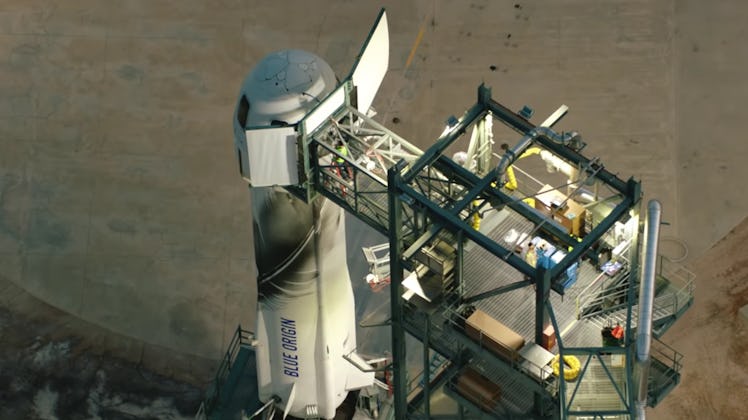
SpaceX is still the only private rocket company that has actually sent humans to space
Commercial space travel is (obviously) a new market, so there isn’t a lot to compare in terms of what a reasonable price for a trip to space equates to. Blue Origin’s bidding process further muddies those waters.
SpaceX is the only private rocket company that has actually sent humans to space . Later this year, it plans to launch the first commercial trip to the International Space Station aboard a SpaceX rocket. Three men have paid $55 million each to take part in the 10-day journey as part of a mission conducted in connection with Axiom Space. The men will stay on the ISS for eight days and conduct experiments, according to the mission website. The $55 million price is all-inclusive, covering training, launch, and the daily cost of living on the ISS.
SpaceX has also chartered a commercial launch for late 2021 called Inspiration4 . The mission is bankrolled by Jared Isaacman , who is bringing three other passengers with him on the journey. The cost of the three-day mission has not been disclosed.
Virgin Galactic, another private space company owned by Richard Branson, offers a little more to go on. The company has sold more than 600 people tickets to travel into space, and these customers have paid at least $250,000 per ticket for the privilege. But initial launches of the spacecraft supposed to take them there have failed, and even killed a Virgin Galactic pilot . Technical issues have plagued recent test attempts to launch, too. So you might pay more to fly with Blue Origin, but there’s perhaps a better chance you’ll get to see space at all.
Is it safe to go to space on a Blue Origin rocket? (Or any rocket?)
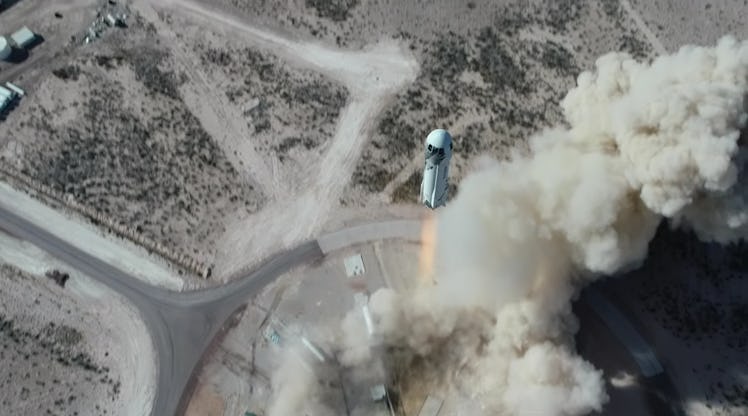
Rockets blow up sometimes.
The opportunity to go to space is undeniably cool, and if you’re thinking about burning millions of dollars on a (very) brief trip to space, then some blogger likely isn’t going to change your mind.
But this is still an inherently risky purchase because rockets blow up sometimes. Just ask Elon Musk , whose Starship rocket prototypes explode all the time — this rocket is supposed to take humans to Mars one day. And while New Shephard has successfully launched and landed 15 test missions, it has never launched and landed with humans inside.
The commercial space race is just beginning, and while it might be exciting for the opportunity to be one of the first in space, the rest of us might want to wait until the kinks are ironed out — and the price drops.
- Space Science
- Newsletters
- Account Activating this button will toggle the display of additional content Account Sign out
What a Ticket on Jeff Bezos’ Rocket Will Cost You
Possibly less than you think.
Jeff Bezos and three other passengers spent roughly 10 minutes Tuesday morning flying on a round trip to space in the New Shepard, a rocket ship built by the billionaire’s aerospace company Blue Origin. The New Shepard took off at around 9:12 a.m. from its launch site near Van Horn, Texas, and flew just above the Kármán Line, a boundary 100 kilometers above the ground that many consider to demarcate the earth from space. After spending a few minutes in zero gravity, the crew descended back down to earth in the New Shepard capsule.
The flight was Blue Origin’s first with people aboard. In its publicity for the mission, the company has said that it wants to send more people into space and will soon start selling tickets, though details about the price and purchasing process are scarce. Other private space companies like Virgin Galactic and SpaceX are planning to sell seats on their vessels, as well. Since 2001, when businessman Dennis Tito became the first person ever to pay for a trip to space, the space tourism industry has seen ups and downs as companies struggled to find ways to make it commercially viable. So far, only a handful of people have been able to pay their way into space. (Even NSYNC singer Lance Bass wasn’t able to raise the $20 million he needed to fly with a Russian space crew in 2002 .) Now, the richest people in the world seem dead set on making regular private space flights a reality. Does this really hail a new era for more widely available trips to space?
At least in the near future, civilians aspiring to visit the cosmos will have to be well-connected or have hundreds of thousands, and perhaps even millions, of dollars to spare. Only one seat was up for sale on the New Shepard for Tuesday’s flight. An anonymous bidder won it in an auction in June for $28 million , though they were unable to attend due to a scheduling conflict and will instead join a future flight. The seat ultimately went to Oliver Daemen, an 18-year-old from the Netherlands who became the youngest person ever to visit space. His father, the CEO of a private equity firm, had also bid on the seat and was eventually able to buy it when the winner dropped out. However, Blue Origin has not disclosed how much the elder Daemen paid. The other two passengers were Jeff Bezos’ brother Mark and Wally Funk, a renowned aviator who trained as an astronaut in the 1960s before the U.S. government canned its “women in space” program.
Besides the $28 million figure, Blue Origin has been fairly tight-lipped about its pricing, though it did say on Tuesday that ticket sales are now open to the general public and directed interested customers to email [email protected] . Blue Origin did not respond to an inquiry about the price of tickets, though Reuters reported that the company initially estimated in 2018 that they would run for $200,000 to $300,000. Bezos also said at a press conference after his flight that “the demand is very, very high” for seats and that Blue Origin has already reached $100 million in private sales, meaning that the company will have to schedule more trips and build more rockets. There are plans for two more flights carrying civilians this year.
Flights through other space tourism services will also cost you at least a few hundred thousand dollars. Virgin Galactic was initially offering ticket reservations for $250,000 and managed to sell about 600 of them before stopping in 2014 due to a test crash. Following its first spaceflight carrying human passengers last week (including founder Richard Branson), the company is expected to reopen ticket sales soon at a higher price for when it starts flying people regularly in 2022 . (At the moment, people can place a $1,000 deposit to reserve a ticket.) Analysts estimate that they’ll ultimately cost between $300,000 and $400,000. At a presentation to investors in 2019 , however, Virgin Galactic executives signaled that after this initial hike, their long-term goal was to drastically lower prices to make the service available to a wider range of people—that is, they hope to be able to do business with the rich instead of just the uber-rich. In discussing the size of the market for tickets, they mused that 1.78 million people had a net worth of more than $10 million and could hypothetically afford a $100,000 ticket, while 5.07 million people have a net worth of more than $5 million and might be willing to pay $50,000 for a ticket.
Virgin Galactic and Blue Origin are only offering suborbital flights, though. If you want to spend more than just a few minutes in space, you’ll likely have to pay tens of millions of dollars. The space tourism company Axiom is flying three people early next year to the International Space Station in SpaceX’s Crew Dragon capsule and will stay there for eight nights; seats are $55 million a pop. That includes the $35,000 per-night cost of living at the space station to cover the cost of life support systems and power. While that rate could get you a suite with a basketball court or bowling alleys in Las Vegas , the Axiom crew will reportedly be spending their nights in sleeping bags.
Future Tense is a partnership of Slate , New America , and Arizona State University that examines emerging technologies, public policy, and society.
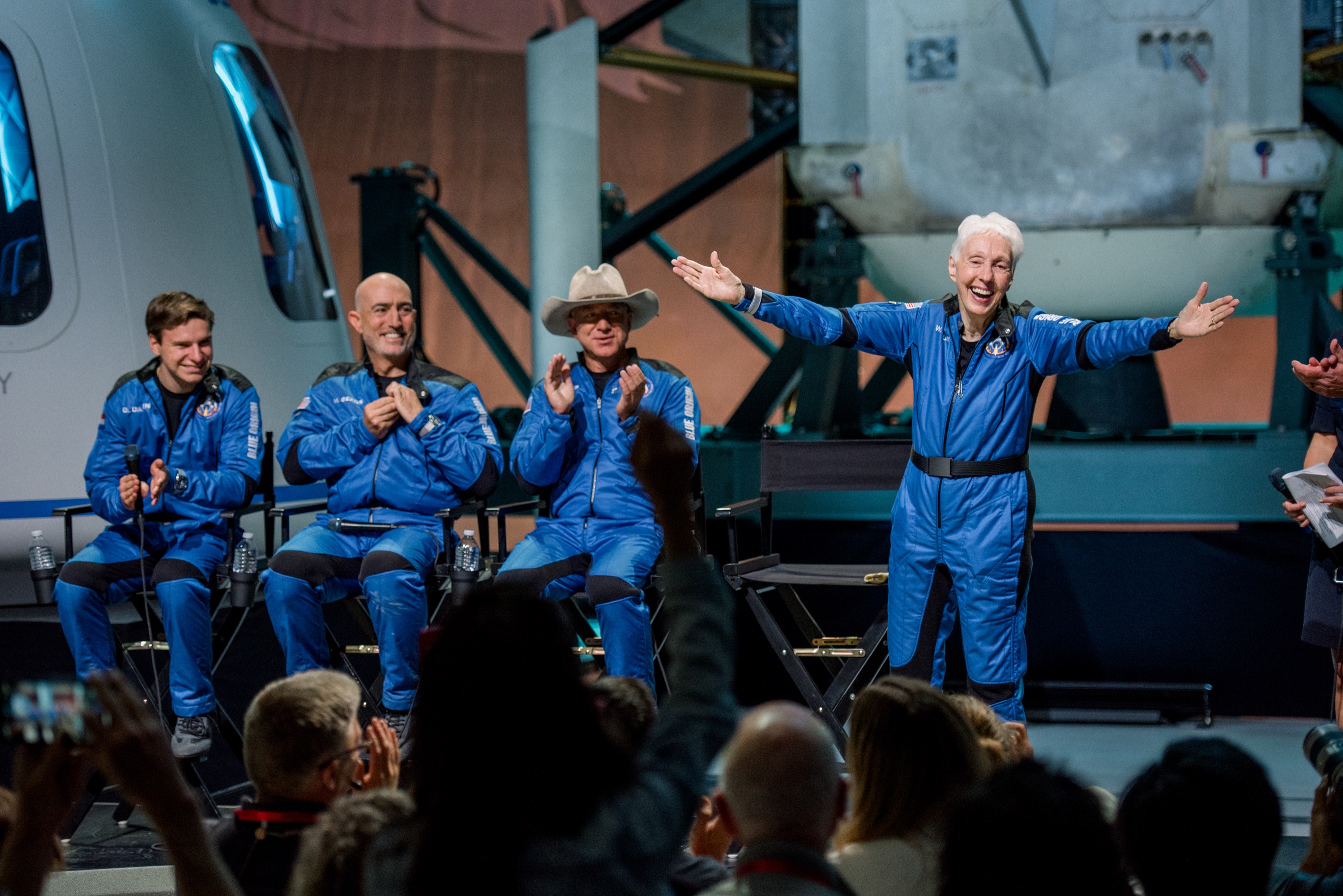
Blue Origin safely launches four commercial astronauts to space and back
Blue Origin successfully completed New Shepard’s first human flight today with four private citizens onboard. The crew included Jeff Bezos, Mark Bezos, Wally Funk and Oliver Daemen, who all officially became astronauts when they passed the Kármán Line, the internationally recognized boundary of space.
Upon landing, the astronauts were greeted by their families and Blue Origin’s ground operations team for a celebration in the West Texas desert.
A Historic Mission
Wally Funk, 82, became the oldest person to fly in space.
Oliver Daemen, 18, was the first ever commercial astronaut to purchase a ticket and fly to space on a privately-funded and licensed space vehicle from a private launch site. He also became the youngest person to fly in space.
New Shepard became the first commercial vehicle under a suborbital reusable launch vehicle license to fly paying customers, both payloads and astronauts, to space and back.
Jeff and Mark Bezos became the first siblings to ever fly in space together.
“Today was a monumental day for Blue Origin and human spaceflight,” said Bob Smith, CEO, Blue Origin. “I am so incredibly proud of Team Blue, their professionalism, and expertise in executing today’s flight. This was a big step forward for us and is only the beginning.”
Blue Origin expects to fly two more crewed flights this year, with many more crewed flights planned for 2022.
If you’d like to purchase a commemorative patch from today’s mission, head to the Blue Origin Shop .
You can also watch a full replay of today's flight and the post-flight press conference below.
If you are interested in securing your own window seat on a future New Shepard launch, sign up for updates on BlueOrigin.com .
-Gradatim Ferociter
Replay: First Human Flight Pre-Launch Mission Briefing
New Shepard remains go for launch on Tuesday, July 20, from Launch Site One in West Texas. Live broadcast starts at 6:30 am CDT / 11:30 UTC. Watch the replay of today’s pre-launch briefing below:
Watch Live: First Human Flight Pre-Launch Mission Briefing
On Sunday, July 18, Blue Origin will host a pre-launch mission briefing live from Launch Site One in West Texas. The event will be broadcast on BlueOrigin.com beginning at 11:00 a.m. CDT / 16:00 UTC.
The briefing will provide final details about the Tuesday, July 20, First Human Flight mission, including updates on vehicle readiness, flight and safety preparedness, and astronaut training.
Participants:
Bob Smith, Chief Executive Officer
Steve Lanius, Lead Flight Director
Audrey Powers, Vice President, New Shepard Operations
Chris Jaeger, Chief Engineer, New Shepard
Ariane Cornell, Director of Astronaut Sales
Follow @BlueOrigin on Twitter for updates.
-Gradatim Ferociter
How to Watch Blue Origin’s First Human Flight on July 20
New Shepard is go for launch. On July 20, Blue Origin will fly its 16th New Shepard flight to space, and its first with astronauts on board. The launch will be broadcast live on BlueOrigin.com beginning at 6:30 am CDT / 11:30 UTC. Liftoff is currently targeted for 8:00 am CDT / 13:00 UTC.
Following the launch, a live press conference with the astronauts will be broadcast on BlueOrigin.com .
Blue Origin’s Launch Site One is in a remote location in the West Texas desert and there are no on-site public viewing areas in the vicinity of the launch site. The Texas Department of Transportation will be closing a portion of State Highway 54 adjacent to the launch site and will not allow spectators on the closed portion of the road during the launch.
Follow @BlueOrigin on Twitter and sign up on BlueOrigin.com to stay up to date on all mission details.
Latest Posts
Blue origin completes 25th mission to space with six crew onboard.
Today, Blue Origin successfully completed its seventh human spaceflight and the 25th flight for the New Shepard program.
New Shepard’s Crewed NS-25 Mission Targets Liftoff on May 19
Blue Origin announced today its seventh human flight, NS-25, will lift off from Launch Site One in West Texas on Sunday,
Blue Origin’s Blue Ring to Demonstrate Operation Capabilities on DarkSky-1 Mission
Blue Origin will demonstrate Blue Ring’s mission operation capabilities and core flight systems on an upcoming Defense
Special Features
Vendor voice.
This article is more than 1 year old
Blue Origin sets its price: $1.4m minimum for trip into space
Expensive free fall experience plus 'astronaut' bragging rights.
Comment If you want to spend a few minutes in free fall and get a view few others have seen in person, Jeff Bezos's Blue Origin space tourism venture has set its price for just such an experience – $1.4m (£1m) or best offer.
Earlier this month Blue Origin announced it will auction off a seat on a July 20 trip beyond the Kármán line, the 100km or 62-mile point above sea level that is a recognized boundary between Earth and space. Following a round of sealed bids, the minimum you now need to offer is $1.4m, and Blue Origin warns it's had a lot of interest.
"We’ve seen more than 5,200 bidders from 136 countries," the space rocket biz told The Register .
The final auction for one of the seats on the flight will be held on June 12. Should you win, what will you get for your money? Well, not much as it turns out.
You'll be sharing a capsule, atop a Blue Origin booster, with as many as six people – presumably that includes some folks who know how to operate the thing. The craft will be taken beyond the Kármán line whereupon the capsule will detach. After three minutes of free fall, and presumably a lot of selfies and possibly not a little vomit, the capsule will return to Earth using parachutes and landing rockets.
- If you're the 1% and have 10 mins to spare this July, bid for a place on first Blue Origin space tourism launch
- Blue Origin sends Mannequin Skywalker aloft again, testing out comfier capsule for future space tourists
- Not so fast, SpaceX: $3bn NASA Moon landing contract blocked by rivals' gripes
- I've got way too much cash, thinks Jeff Bezos. Hmmm, pay more tax? Pay staff more? Nah, let's just go into space
Free fall experience is relatively easy to come by. Commercial outfits, such as the Zero Gravity Corporation, will give you more time floating around than that offered by Blue Origin for $6,700 plus tax, albeit in short bursts. That's achieved using parabolic flights to allow people, Stephen Hawking and at least one Reg hack included, to float around the cabin as though they were in space.
But that's not really what Blue Origin is selling. It's giving people an ultra-rare view of the Earth from high up. And, most importantly one suspects, the bragging rights to call yourself an "astronaut."
Legal niceties
And that's down to a scientific equation. The Kármán line was proposed as the border between the point where atmospheric flight is impossible and space flight begins. But there's a huge difference between that and the profession, or even the expensive hobby, of being an astronaut.
Professional astronauts are people who dedicate their lives to the quest for space. They are usually highly skilled in multiple professions – piloting craft, multiple-language proficiency, engineering, software skills, science and/or medicine. They eschew higher-paying roles that their skills could win them and wait years for the chance to get into space and do something useful in the void.
The International Space Station pioneered space tourism, where those who had enough cash could buy themselves some time in orbit, but even then visitors need three months of training before they could make the jump some way out of the gravity well and onto mankind's extraterrestrial outpost.
Blue Origin, and Sir Richard Branson's Virgin Galactic, are working on a different model. If you're the right height and weight, can get yourself in and out of a seat, then you're pretty much good to become what is technically an astronaut.
It's the equivalent of calling yourself a hunter when you sit in a covered hutch and shoot those feeding on bait, or a racing driver because you bought some track time. Let's call it what it is: space tourism.
Of course, the companies involved are careful to avoid the T word. But for all intents and purposes, it's a fairground ride for the 0.1 per cent. One wonders what good that money could do if was used to solve problems here on Earth or develop serious ways to get us off this rock.
An increasingly resource-hungry world is starving in the midst of plenty. We are surrounded by resources in orbiting space rocks and planets to plunder that could solve humankind's resource problems.
Maybe space tourism will provide some of the funds to do this, but your humble vulture has his doubts. This looks more like a roller-coaster for the super-well-off, a carnival for the mega-rich. ®
- Blue Origin
Broader topics
Send us news
Other stories you might like
Blue origin to fly another 90-year-old into outer space, america's first private lunar lander suffers 'critical' fuel leak en route to moon, bezos' engineers dream of blue ring space platform in orbit by 2025, the sky’s the limit for 5g app developers.
Bezos might beat Musk to Mars as NASA recruits Blue Origin's New Glenn rocket
Blue origin pulls sheets off cargo lunar lander prototype, amazon to launch first project kuiper internet satellites, amazon's three rocket makers insist project kuiper will launch on schedule, the only thing launched for amazon's project kuiper is a lawsuit, blue origin tells staff to catch next rocket back to their desks, japanese balloon startup wants to 'democratize space' – with $180,000 ticket price, commercial space station orbital reef's design phase passes nasa review.
- Advertise with us
Our Websites
- The Next Platform
- Blocks and Files
Your Privacy
- Cookies Policy
- Privacy Policy
- Ts & Cs

Copyright. All rights reserved © 1998–2024
We've detected unusual activity from your computer network
To continue, please click the box below to let us know you're not a robot.
Why did this happen?
Please make sure your browser supports JavaScript and cookies and that you are not blocking them from loading. For more information you can review our Terms of Service and Cookie Policy .
For inquiries related to this message please contact our support team and provide the reference ID below.
Virgin Galactic's first space tourism flight took off this week. Here are the players taking civilians to space.
- Virgin Galactic launched its first space tourism flight for paying customers on August 10.
- It marks a new era in space tourism for the company, with monthly flights expected to follow.
- Space tourism is a growing industry for the rich. Seats on a Virgin Galactic flight cost $450,000 each.

This week, Virgin Galactic's first space tourism flight successfully launched from New Mexico, taking three passengers who weren't traditional astronauts, to the edge of space and back .
Blasting off to the edge of space has become a more popular — though hardly mainstream — tourism experience. The company intends on operating commercial flights every month, ushering in a new era for space travel.
Galactic 02's passengers included Keisha Schahaff and Anastatia Mayers, a mother and daughter from the Caribbean who won their seats in a ticket raffle, as well as Jon Goodwin, an 80-year-old former Olympian .
Virgin Galactic , Richard Branson's commercial space venture, was established in 2004 and completed its first commercial spaceflight in June. On the flight were three passengers from the Italian Air Force and National Research Council.
Space tourism translates to big business for the company: In its second quarter earnings report, Virgin Galactic attributed an increase in quarterly revenue from $0.4 in 2022 to $2 million this year to "commercial spaceflight and membership fees related to future astronauts."
Tickets for a seat on a Virgin Galactic rocket can cost $450,000, though some, like Goodwin, bought their tickets over a decade ago for $250,000.
The steep price doesn't seem to be keeping people away. As of the end of last year, about 800 tickets for commercial spaceflights had been reserved, the company said in its 2022 annual report . These tickets will translate to about $207 million in future revenue, per the report.
Virgin Galactic is not the only company in the game. In July 2021, Jeff Bezos' Blue Origin sent four people, including Bezos, 62 miles above Earth, marking the first passenger spaceflight completed by the Amazon chairman's company, which was founded in 2000.
Using a rocket called New Shepard , Blue Origin has completed six human spaceflights since.
There's also SpaceX, Elon Musk 's rocket company, which was founded in 2002 and is making concerted efforts in the commercial spaceflight industry.
In September 2021, SpaceX's Falcon 9 rocket took four civilians close to orbit without any professional astronauts on board. It was the first all-civilian crew to successfully complete a mission and was funded entirely by billionaire Jared Issacman.
The following year, SpaceX , in conjunction with Axiom Space, launched the first all-private crew to the International Space Station, where they spent more than a week. The four attendees spent $55 million each for the trip.
Of course, most of us mere mortals aren't able to afford the price of entry into outer space. So until it becomes more affordable, here's a look at the options available to space tourists:
Virgin Galactic completed its first space tourism flight, dubbed Galactic 02, with paying customers on August 10. With monthly flights expected to take place moving forward, the company has asserted itself as a major player in the spaceflight industry.
Source: Virgin Galactic
The flight took off at 10:30 a.m. EST and landed at hour later, reaching a an apex point of 55 miles above the Earth. Virgin Galactic's next private spaceflight, Galactic 03, is planned for September.
The flight marked the first mother-daughter duo, Olympian, and majority female crew to go to space. Keisha Schahaff and Anastatia Mayers also become the first Caribbean astronauts.
Virgin Galactic completed its first commercial space flight, Galactic 01, at the end of June. The mission was for research, not tourism, and included three passengers from the Italian Air Force and National Research Council.
Source: Insider
The flight lasted 72 minutes from take off to landing.
Galactic 01's objectives were to measure hypergravity and microgravity effects on the human body.
Walter Villadei, a colonel in the Italian Air Force, was on the flight.
As of now, tickets are going for $450,000 a pop. While cabins can fit four people, Virgin Galactic intends on flying out only three passengers, reserving the final seat for an astronaut trainer.
Sources: Insider , Spacenews
Blue Origin's New Shepard made its ascent towards the edge of space and subsequent return back in August 2022. NS-22 was the company's most recent successful mission, and marked the rocket's 22nd mission to space and sixth human flight.
Source: Blue Origin
The calm before the storm: New Shepard at its launch pad ahead of NS-22 last year. Six crew members were part of the flight and getting ready inside the craft.
During the course of Blue Origin's 11-minute trips, tourists experience zero gravity, which offers a sense of weightlessness. The company requires passengers to take a course in order to prepare.
Mario Ferreira, a businessman and entrepreneur, became the first person from Portugal to travel to space after successfully completing NS-22. Sara Sabry, an engineer and CEO of the nonprofit Deep Space Initiative, pictured on the right, was the first person from Egypt to go to space.
Past Blue Origin passengers include "Star Trek" actor William Shatner, healthcare entrepreneur Glen de Vries, and Bezos' brother Mark.
Blue Origin is notoriously tight-lipped about its ticket pricing, but prior to its first commercial flight in July 2021, a passenger who later had to skip the flight due to "a scheduling conflict" said he'd paid $28 million to secure a seat.
SpaceX's Falcon 9 rocket is the only vessel that has sent private civilians to the International Space Station.
SpaceX's commercial space flight is the only one to actually send tourists into orbit, or 363 miles above Earth. In September 2021, a Falcon 9 rocket took four civilians into space for a total cost of around $220 million, paid for in full by billionaire Jared Isaacman.
Source: ABC
Blue Origin, Virgin Galactic, and SpaceX did not respond to Insider's request for comment.
- Main content

- [ May 27, 2024 ] SpaceX launches ESA’s EarthCARE on a Falcon 9 launch from Vandenberg Space Force Base Falcon 9
- [ May 26, 2024 ] SpaceX completes Tuesday Starlink launch after Memorial Day scrub Falcon 9
- [ May 25, 2024 ] SpaceX details learnings from Starship Flight 3, sets June 5 as target launch date for Flight 4 Mission Reports
- [ May 24, 2024 ] Rocket Lab launches first of NASA’s climate-monitoring PREFIRE spacecraft Electron
- [ May 24, 2024 ] NASA says Boeing’s Starliner crew capsule can safely fly ‘as is’ with propulsion system helium leak Atlas 5
Blue Origin launches six more passengers to suborbital space
Blue Origin launched six more people on a quick, 10-minute flight to suborbital space Thursday from West Texas. A popular YouTuber and the first people from Egyptian and Portugal to fly above the internationally-recognized boundary of space were among the commercial passengers.
The launch occurred at approximately 9:57 a.m. EDT (8:57 a.m. CDT; 1357 GMT) Thursday to begin Blue Origin’s sixth human space mission. The six new space fliers launched Thursday brought to 31 the total number of people Blue Origin has ferried to the edge of space. Blue Origin’s first human mission last July carried billionaire founder Jeff Bezos and three co-passengers.
A single-stage New Shepard rocket built for the space tourism and suborbital research market carried the six passengers to an altitude of about 351,000 feet (107 kilometers), above the the edge of space as defined by the international record-keeping body for aeronautics.
The six passengers on Blue Origin’s NS-22 mission included Coby Cotton, one of five cofounders of the popular Texas-based YouTube channel “Dude Perfect.” Cotton’s seat was arranged through MoonDAO, a decentralized autonomous organization whose members voted on who should represent them in a seat purchased by the group.
Quartz reported Thursday that MoonDAO, which typically works in cryptocurrency, paid about $2.5 million for two seats on Blue Origin flights, including Cotton’s ride Thursday. MoonDAO’s payment to Blue Origin — at about $1.25 million per ticket — is the first public figure available for the price to ride a Blue Origin rocket to suborbital space.
The price is higher than the ticket price Virgin Galactic charges its customers for a similar ride to the edge of space. Virgin Galactic has not yet flown any of its paying customers to space.
The Dude Perfect crew held a model rocket launch competition to determine which of the cofounders would get the MoonDAO seat on Blue Origin’s rocket. Cotton, 35, had the highest-flying rocket and won the ticket.
Sara Sabry, a 29-year-old Egyptian engineer working in Berlin, was selected for her seat on the NS-22 mission by a nonprofit called Space for Humanity, which seeks to expand access to space for all people. She became the first Egyptian to fly to space.
Mário Ferreira, 54, also took a seat on the Blue Origin crew capsule on top of the New Shepard rocket. He is an investor and entrepreneur, and became the first person from Portugal to fly to space.
The other passengers included Vanessa O’Brien, an experienced British-American mountaineer and adventurer who became the first women to reach the top of Mount Everest, the deepest point in the world’s oceans, and fly in space.
Clint Kelly III, technology pioneer who helped pave the way for driverless cars, also flew to to space Thursday. And Florida native Steve Young, a businessman who made his fortune in the telecom industry, rounded out the six-seat crew cabin.
In preparation for Thursday morning’s mission, Blue Origin rolled the New Shepard to the launch pad overnight and raised it vertical for final checkouts. The single-stage rocket stands about 60 feet, or 18 meters, tall and is powered by one BE-3 engine burning a mix of super-cold liquid hydrogen and liquid oxygen propellants.
The launch team loaded the cryogenic propellants into the New Shepard booster early Saturday, while the six passengers finished preparations at a nearby facility the company calls “Astronaut Village.”
The passengers, who didn’t wear pressurized spacesuits for their 10-minute ride to space, traveled to the launch pad and boarded the crew capsule on top of the New Shepard booster about 30 minutes before liftoff. The ground support team closed the hatch and moved to a fallback position for launch.
The rocket’s BE-3 engine ignited and throttled up to full power, then clamps released to allow the New Shepard booster to begin a vertical climb away from its launch pad. The BE-3 produced about 110,000 pounds of thrust at full power, firing for about 2 minutes, 20 seconds, to propel the New Shepard and its six passengers toward space.
After engine cutoff, the crew capsule separated from the booster to begin independent arcing trajectories, passing above the von Kármán line — the internationally recognized boundary of space — at an altitude of about 62 miles (100 kilometers) for a couple of minutes. That gave the passengers in the capsule time to unstrap from their seats and float around the pressurized cabin, enjoying expansive views through the largest windows ever flown in space.
“We’re doing it!” one of the Blue Origin passengers as the crew capsule climbed into space. “Look at the blackness!”
The passengers returned to their seats and strap in before the spacecraft fell back into the thicker layers of the atmosphere, bracing for parachute deployment and touchdown on the desert floor a few miles from the launch site. The entire flight from liftoff to landing of the capsule lasted about 10 minutes.
“The parachutes are out!” one of the passengers said, perhaps half-seriously and half-jokingly. “We’re not going to die! … Our poor families.”
Meanwhile, the reusable booster descended back to Earth and accomplished a propulsive vertical touchdown on a landing pad a few minutes before the return of the capsule. The flight Thursday marked the 22nd launch of a New Shepard booster, and the eighth flight by this particular rocket.
Email the author.
Follow Stephen Clark on Twitter: @StephenClark1 .
© 1999-2024 Spaceflight Now Inc
- Share full article
Advertisement
Supported by
NASA Picks Blue Origin’s Blue Moon Lander for Artemis V Mission
After losing out to SpaceX, Jeff Bezos’ rocket company will get a chance to carry astronauts to the moon’s surface on a mission scheduled for 2029.

By Kenneth Chang
On their second try, Jeff Bezos and his rocket company have won a contract to take NASA astronauts to the moon.
NASA announced on Friday that it had awarded a contract to Mr. Bezos’ company, Blue Origin, to provide a lunar lander for a moon mission that is scheduled to launch in 2029. NASA agreed to pay $3.4 billion for the 50-foot-tall spacecraft, which is named Blue Moon and can transport four astronauts to the moon’s surface.
The mission, Artemis V, is another critical piece of NASA’s Artemis program to send astronauts back to the moon as part of an effort to explore its south pole region. Astronauts are to land on the moon in a vehicle built by SpaceX for the Artemis III and IV missions.
John Couluris, Blue Origin’s vice president for lunar transportation, said that the company was contributing “well north” of the price of the NASA contract amount to the development effort and that it, not NASA, would absorb any cost overruns. In the past, some members of Congress have complained about providing taxpayer money to Blue Origin, given Mr. Bezos’ wealth.
”We want more competition,” Bill Nelson, the administrator of NASA, said during the announcement on Friday at NASA’s headquarters in Washington. “It means that you have reliability. You have backups.”
Lisa Watson-Morgan, the manager for the human landing system program at NASA, said the second lander “also helps us with a more diversified industrial base, and that will help us advance innovation in the future.”
The winning of the contract could start a promising rebound year for Blue Origin after a number of delays and setbacks — including the failure of one of its New Shepard vehicles , which travel to space but not to orbit, during a launch last September that carried experiments but no passengers. Blue Origin has identified the cause and hopes to resume New Shepard flights involving both space tourists and scientific cargo later this year.
And some hardware manufactured by Blue Origin might finally be used on an orbital mission in the coming months. The company built engines for the booster stage of the Vulcan rocket being developed by the United Launch Alliance, a joint venture of the aerospace giants Boeing and Lockheed Martin.
Blue Origin might also provide some public glimpses of New Glenn, a much larger rocket that is to launch payloads to orbit.
For the lunar lander contract, Blue Origin, in collaboration with other aerospace companies such as Boeing and Lockheed Martin, beat a second team led by Dynetics, a defense company based in Huntsville, Ala.
“The feeling is absolutely fantastic,” Mr. Couluris said. “This is Step 1, though. We have a lot to do before we successfully land and return astronauts.”
The Blue Moon lander is designed to fit within the 23-foot-wide diameter of Blue Origin’s New Glenn rocket, and will weigh more than 45 metric tons when filled with propellants.
For Artemis V, the lander will first dock at Gateway, a small outpost in orbit around the moon. Four astronauts will travel to Gateway in another spacecraft, NASA’s Orion capsule. Then they will transfer to the Blue Moon lander for a stay near the lunar south pole lasting about a week.
After their visit to the moon, the lander will blast off and return to Gateway, and the Orion capsule will take all four astronauts back to Earth. The same lander could be used for several missions.
A second Blue Origin spacecraft will be needed to transport liquid hydrogen and liquid oxygen from Earth to lunar orbit to refill the propellant tanks of the Blue Moon. Transfer of propellants in the near-weightless environment of space, especially ultracold liquid hydrogen, is tricky and has not yet been demonstrated on a large scale.
Mr. Couluris said Blue Origin would conduct an uncrewed demonstration flight of the lander in 2028, a year before it is to be used for astronauts.
“We fully expect to meet the NASA schedule,” Mr. Couluris said.
Mr. Couluris said the lunar lander could also be configured to carry 30 metric tons of cargo instead of passengers, “to form the foundation of habitats and other permanent infrastructure” on the moon’s surface.
The Artemis V mission was the second bid by Mr. Bezos’ company to land on the moon. In 2021, Blue Origin and Dynetics were disappointed when NASA awarded SpaceX a fixed $2.9 billion contract to build a variation of its giant Starship vehicle that would land astronauts on the moon for the first time in more than half a century .
The two companies protested the decision, especially because NASA officials originally aimed to award two contracts.
That would have paralleled successful efforts by NASA that turned over to private companies the transportation of cargo and crew to the International Space Station. But NASA officials said at the time that there was not enough money in their budget for a second lander. SpaceX’s $2.9 billion bid was the lowest bid by far. Blue Origin’s proposed design had a price tag of $6 billion, and the one offered by Dynetics was even more expensive.
The federal Government Accountability Office rejected the protests of the two companies. Blue Origin then sued in federal court and again lost .
Last September, after winning a larger budget from Congress, NASA announced a competition for a second lunar lander. Dynetics and Blue Origin decided to compete again, though there was some shuffling of the companies participating in the efforts. Northrop Grumman, which was part of Blue Origin’s original proposal, switched to the Dynetics team.
Blue Origin added to its team Boeing; Astrobotic, a small Pittsburgh company that is developing robotic lunar landers; and Honeybee Robotics, a space technology company that Blue Origin bought last year.
The design of the spacecraft also changed, adding in-space propellant transfer.

How 3 NASA Missions Could Send Astronauts Back to the Moon
By the end of this decade, humans could walk on the moon once again. Here’s how NASA plans to send them there.
But it will not reach the moon for a while.
SpaceX’s initial $2.9 billion contract was to provide the lander for the first moon landing during Artemis III, which is currently scheduled for late 2025 but is likely to slip to 2026 or later. In November, NASA exercised a $1.15 billion option in that contract for SpaceX to provide a lander for Artemis IV as well, a mission that is scheduled for 2028.
After Artemis V, NASA will be able to choose between the SpaceX and Blue Origin designs for later missions.
Eventually, companies and people outside of NASA could also buy Blue Moon rides. “We do have a number of entities that are interested,” Mr. Couluris said.
Kenneth Chang has been at The Times since 2000, writing about physics, geology, chemistry, and the planets. Before becoming a science writer, he was a graduate student whose research involved the control of chaos. More about Kenneth Chang
What’s Up in Space and Astronomy
Keep track of things going on in our solar system and all around the universe..
Never miss an eclipse, a meteor shower, a rocket launch or any other 2024 event that’s out of this world with our space and astronomy calendar .
Euclid, a European Space Agency telescope launched into space last summer, finally showed off what it’s capable of with a batch of breathtaking images and early science results.
A dramatic blast from the sun set off the highest-level geomagnetic storm in Earth’s atmosphere, making the northern lights visible around the world .
With the help of Google Cloud, scientists who hunt killer asteroids churned through hundreds of thousands of images of the night sky to reveal 27,500 overlooked space rocks in the solar system .
A celestial image, an Impressionistic swirl of color in the center of the Milky Way, represents a first step toward understanding the role of magnetic fields in the cycle of stellar death and rebirth.
Is Pluto a planet? And what is a planet, anyway? Test your knowledge here .
- My View My View
- Following Following
- Saved Saved
Bezos' Blue Origin launches first crew to edge of space since 2022 grounding
- Medium Text
CORRECTIVE ACTIONS
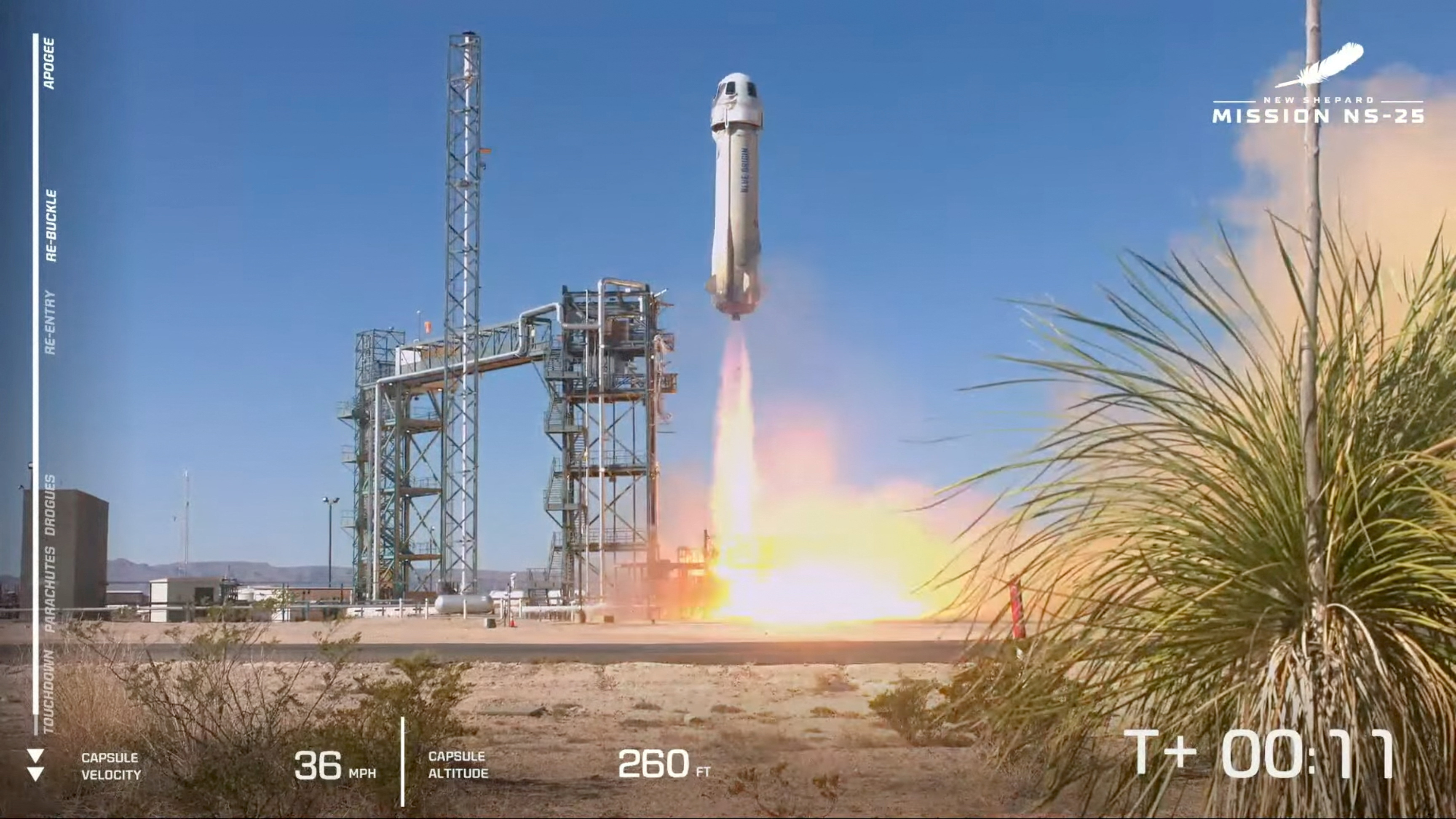
Sign up here.
Reporting by Joey Roulette in Washington; Editing by Will Dunham and Franklin Paul
Our Standards: The Thomson Reuters Trust Principles. New Tab , opens new tab
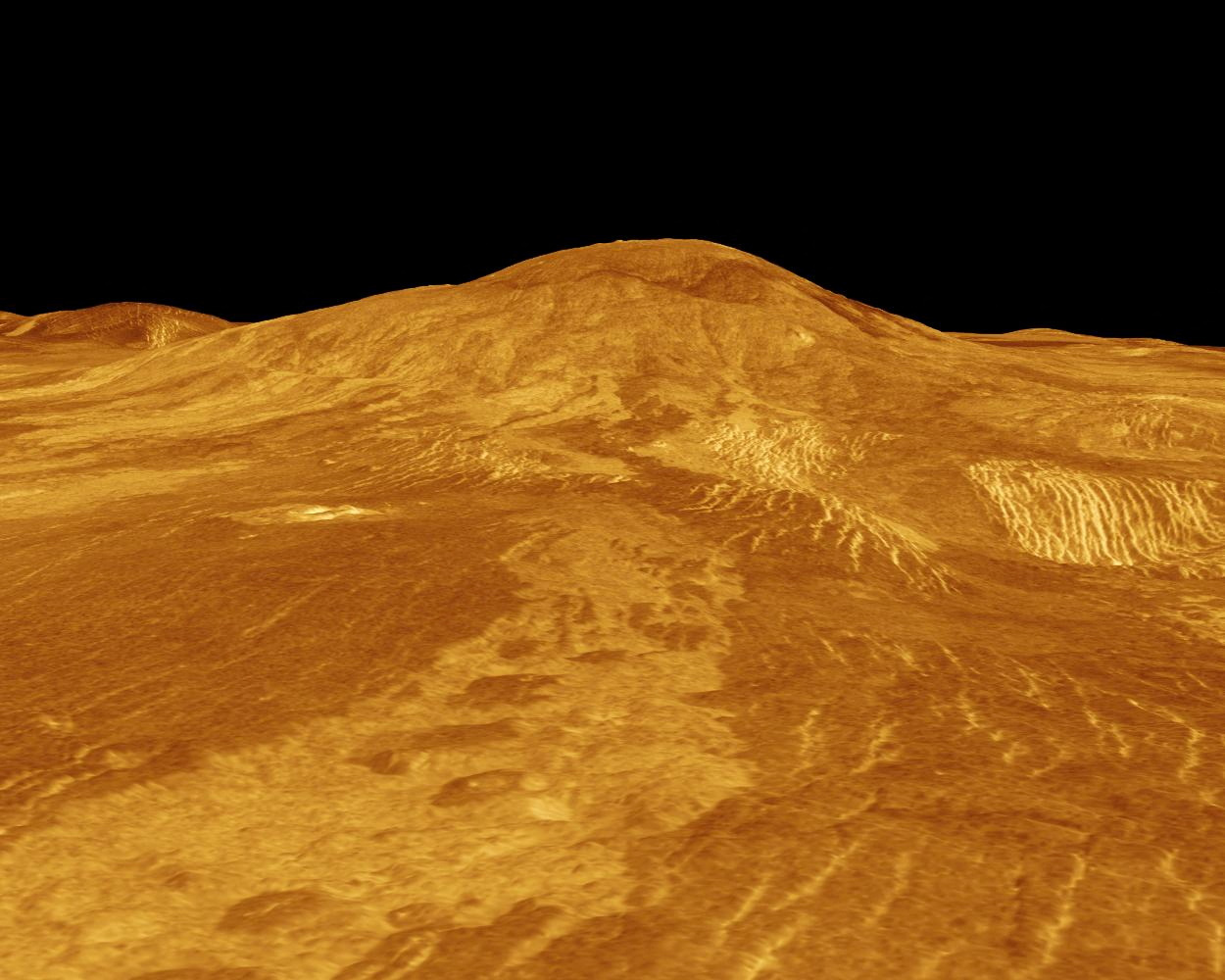
Italy's Vega-C rocket is closer to flying again after a successful test of its engines carried out at the end of May, its manufacturer Avio said on Tuesday.
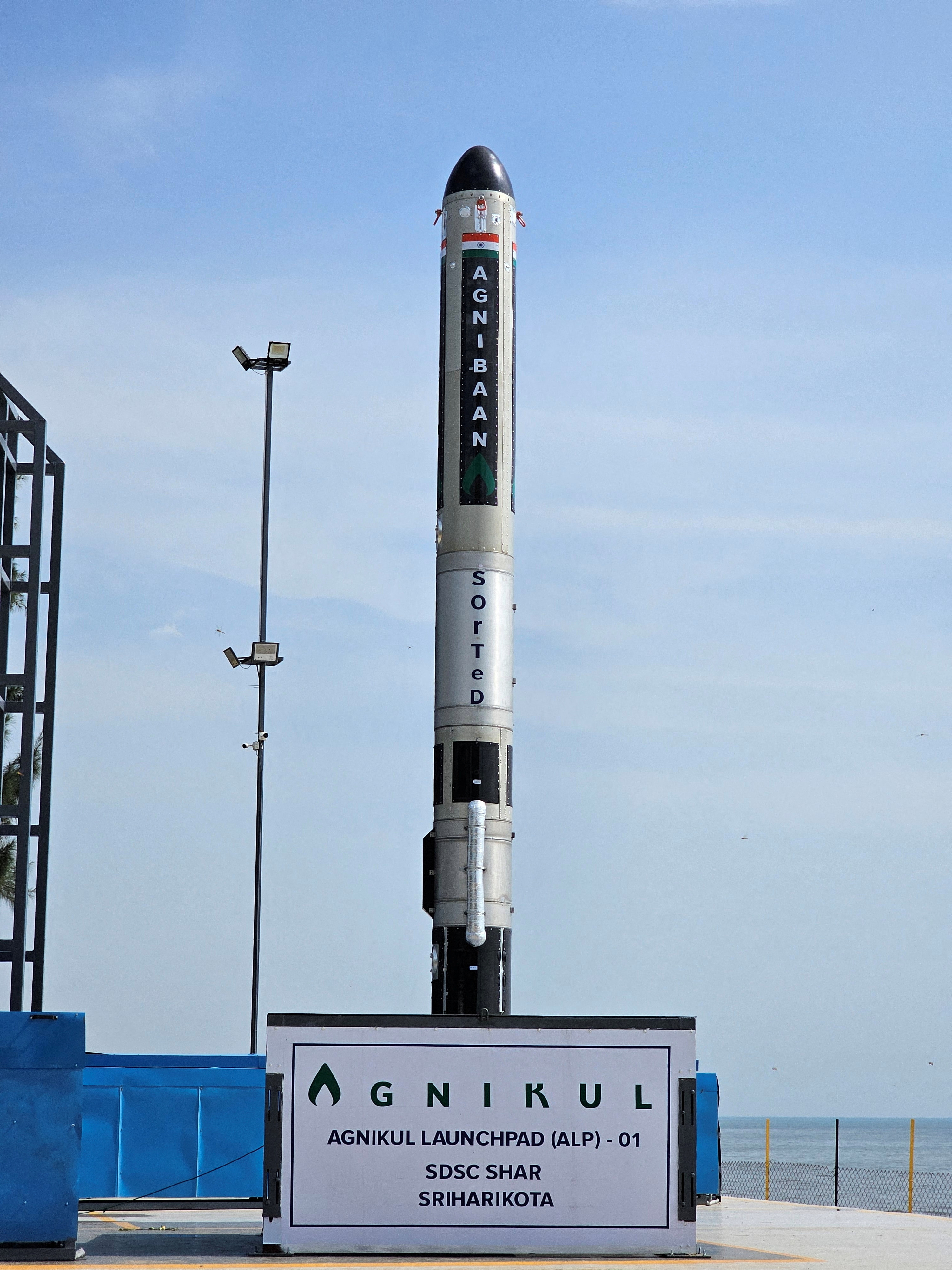
China's maritime safety administration said it will conduct rocket launches in the Yellow Sea on May 28-31, according to a statement.

Technology Chevron

T-Mobile to buy US Cellular's wireless operations in $4.4 billion deal
T-Mobile will buy almost all of regional carrier United States Cellular's wireless operations including customers, stores and 30% of its spectrum assets in a deal valued at $4.4 billion, the telecom giant said on Tuesday.
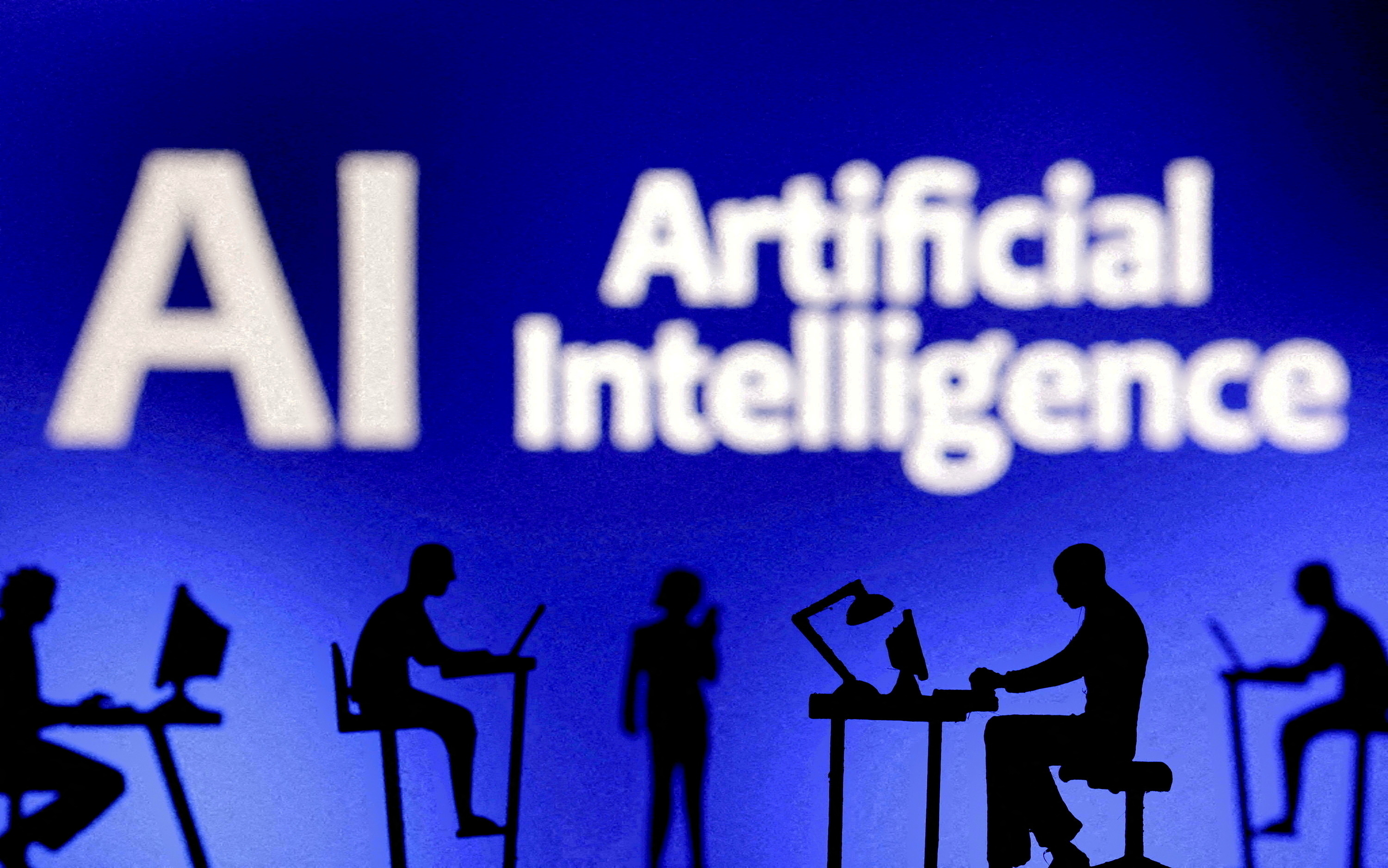
Blue Origin Hasn't Announced Ticket Prices, but Most Can't Afford It
How much does it cost to fly on Blue Origin? Learn more about the company that sent 'Good Morning America' anchor Michael Strahan to space.
Mar. 13 2023, Updated 3:20 p.m. ET
Blue Origin tickets are going at a “really good price,” even as much as $28 million.
Blue origin could charge customers upward of $200,000 for the first spaceflights., how much did michael strahan pay for his blue origin flight ticket.
How much does it cost to fly on Blue Origin ? The company isn’t saying, nor is Michael Strahan , the Good Morning America anchor who blasted off on a Blue Origin rocket on Dec. 11, 2021.
In July 2021, after his own spaceflight, Blue Origin founder Jeff Bezos said he and his colleagues “didn’t know quite yet” when the company would publicly divulge its price for a ticket to space. “Right now we’re doing really well with private sales,” he added, reports The New York Times . But intel from 2018 may hint at Blue Origin’s current pricing strategy. Read on, future astronauts.
William Shatner smiles after his October 2021 Blue Origin spaceflight.
Presumably, not all Blue Origin tickets cost $28 million, which was the winning bid at a charity auction in June 2021. The winning bidder had to reschedule their flight, so their ticket went to Dutch teenager Oliver Daemen, whose father, a private equity executive, placed the next-highest bid .
“We think we had 7,500 people in the auction from over 150 countries,” Blue Origin CEO Bob Smith said in July 2021, reports GeekWire . “Generally, there’s really high interest. So the question really gets down to what’s the price point. Our early flights are going for a very good price. You saw the interest during the auction was quite high. We had people well into the twenties [$20 million], all very interested. Some of that was skewed, obviously, by the auction.”
Two Blue Origin employees spoke anonymously to Reuters in July 2018. One of those workers, an employee “with first-hand knowledge of the pricing plan,” said Blue Origin planned to charge customers about $200,000 to $300,000. The second employee corroborated those figures, saying the tickets would cost $200,000 at minimum.
If so, Blue Origin would be offering “spacefares,” so to speak, close to those of rival company Virgin Galactic . As Slate reports, the Richard Branson company was offering ticket reservations for $250,000 before a test crash grounded the spaceflight program in 2014. Now that the program is up and running—with Branson and others making a suborbital flight in July 2021 — analysts project that Virgin Galactic tickets will cost between $300,000 and $400,000.
Despite the speculation, it appears Blue Origin flight tickets may be based on who you are and who you know. While some have had their tickets comped by the one and only Bezos, others have paid well into the millions for a chance to experience space aboard a Blue Origin rocket. Needless to say, you better start saving!
View this post on Instagram A post shared by Blue Origin (@blueorigin)
On Good Morning America on Nov. 23, 2021, co-host Michael Strahan — a former NFL star who played for the New York Giants — announced that he would join a December 2021 Blue Origin spaceflight. He’s the latest celebrity to venture into the great beyond, following the October spaceflight of William Shatner. CNN reported that Strahan and Laura Shepard Churchley — daughter of NASA pioneer Alan Shepard and another passenger of the flight — were “honorary guests” and didn't pay for their tickets.
Strahan announced he's on the Blue Origin NS-19 crew this morning live on TV: "There you go, I'm going to space!" pic.twitter.com/PCfuEPainb — Michael Sheetz (@thesheetztweetz) November 23, 2021
“I believe that this is the way of being innovative, creative, pioneers in aviation, now space travel,” Strahan said on Nov. 23, 2021. “And it’s going to take a while, but I do believe that it will bring a lot of technological breakthroughs and also innovations to us here on Earth, and I just want to be a part of it.”
Who Owns Remington Firearms After Bankruptcy Sale?
Who Owns the Yeezy Brand Now? Adidas Ended Partnership
Big Changes Are Coming for Walgreens — What to Expect
Latest Company & Industry Overviews News and Updates
- ABOUT Market Realist
- Privacy Policy
- Terms of Use
- CONNECT with Market Realist
- Link to Facebook
- Link to Instagram
- Contact us by Email

Opt-out of personalized ads
© Copyright 2024 Market Realist. Market Realist is a registered trademark. All Rights Reserved. People may receive compensation for some links to products and services on this website. Offers may be subject to change without notice.

- Entertainment
- Rex Reed Reviews
- Awards Shows
- Climate Change
- Restaurants
- Gift Guides
- Business of Art
- Nightlife & Dining
- About Observer
- Advertise With Us

Every Space Tourism Package Available in 2021 Ranked: From $125K to $60 Million
From virgin galactic's suborbital ride to spacex's multi-day orbital voyage, we've rounded up every space tourism package available..

2021 is a historic year for commercial space travel. A record number of civilian orbital and suborbital missions launched successfully: Elon Musk ’s SpaceX launched four amateur astronauts into Earth’s orbit for the first time; a Russian film crew spent 12 days on the International Space Station shooting the world’s first movie in space; and two multi-billionaires flew to the edge of Earth’s atmosphere as the first passengers of their respective space companies to show the public that their new spacecrafts are safe and fun.
Sign Up For Our Daily Newsletter
Thank you for signing up!
By clicking submit, you agree to our <a rel="noreferrer" href="http://observermedia.com/terms">terms of service</a> and acknowledge we may use your information to send you emails, product samples, and promotions on this website and other properties. You can opt out anytime.
As with everything in its early stages, space tourism today is unattainably expensive (although demand appears to be strong enough to keep existing companies in this market busy for several years). But eventually, as technology matures and more companies enter the industry, prices will hopefully go down. As a space tourism entrepreneur told Observer this summer, going to space in the future “will be more and more like going to Europe.”
Below, we’ve rounded up every space tourism package that is either available now or in the near future. We have listed them in the order of price and compared them by travel duration, maximum altitude, passenger cabin amenities, and value for money—if you can afford it, that is.
Space Perspective: “Hot Air Balloon” to Stratosphere
Price: $125,000 Flight altitude: 30 kilometers What you’ll get: A relaxing six-hour ride to the stratosphere in a balloon-borne pressurized capsule. Date available: 2024 Value for money: ★★★★ (4/5 stars)

Founded by the team that launched Alan Eustace in 2014 for his Guinness World Record space jump , Florida-based Space Perspective in June began selling tickets of its yet-to-be-licensed “Spaceship Neptune” flights.
A pressurized capsule designed to carry up to eight passengers and one pilot will be slowly lifted by a hydrogen-filled balloon the size of a football field when fully inflated to 19 miles (30 kilometers) in the sky, about three times the altitude of commercial planes. The passenger cabin features a bar, a bathroom and huge windows specially designed for sightseeing.
The balloon will hover at its peak altitude for about two hours before slowly descending to a splashdown in the Atlantic Ocean, where passengers and will be picked up by a recovery ship.
Because the space balloon moves at only 12 miles per hour during ascent and descent, no special training is required before the ride. Space Perspective completed a test flight in June. The company expects to begin flying paying customers before the end of 2024.
Virgin Galactic: Suborbital Joy Ride
Ticket Price: $450,000 Flight altitude: 50 km What you’ll get: A 90-minute ride to 50 kilometers above sea level in a SpaceShipTwo spaceplane. A few minutes of zero-gravity experience during descent. Date available: Now Value for money: ★★ (2/5 stars)

If you like a more thrilling space experience provided by a company with a little bit of a track record, Virgin Galactic (SPCE) ’s 90-minute suborbital flight might be your choice.
In July, the company’s founder, Richard Branson , became its first passenger and flew to the edge of Earth’s atmosphere in a VSS Unity SpaceShipTwo spaceplane along with two pilots and three Virgin Galactic employees.
A pioneer in the nascent space tourism industry, Virgin Galactic began selling seats in 2013 at $250,000 apiece. By the time it halted sales in 2014 (after a test flight failure), the company had collected deposits from more than 600 aspiring customers. Ticket sales resumed in August this year at a higher price of $450,000. Virgin Galactic said it has since received 100 reservations.
Each VSS Unity SpaceShipTwo can carry up to four passengers. Virgin Galactic expects to fly paying passengers three times a month in 2023. At its current reservation volume, it will take the company a number of years to clear its wait list. So, patience is your friend here.
Blue Origin: Quick Rocket Trip to the Kármán line
Ticket Price: Reportedly $28 million Flight altitude: 100 km What you’ll get: A 12-minute ride to the Kármán line, the internationally recognized boundary between Earth’s atmosphere and outer space. Date available: Now Value for money: ★ (1/5 stars)

Blue Origin offers a similar suborbital flight package to Virgin Galactic’s. The main difference is that Virgin flies passengers in a plane while Blue Origin launches amateur astronauts in a real rocket.
On July 20, a few days after Branson’s spaceflight, Jeff Bezos became the first customer of his own space company as well, blasting off to 107 kilometers in the sky in a New Shepard booster-capsule combo. The same spacecraft launched another crew of four passengers, including Star Trek actor William Shatner , on October 13.
Blue Origin began taking reservations in May. The exact ticket price is still a mystery. Bezos has said Blue Origin will price New Shepard flights similarly to its competitors, which led us to speculate that it would likely fall in the range of what Virgin Galactic charges. But, according to Tom Hanks , the ride would cost $28 million, which he said was the reason he turned down Bezos’ invitation to fly on the October mission. Hanks may have been joking, but $28 million was how much an auction winner paid to fly alongside Bezos in July. Of that total, $19 million was donated to various space organizations, Blue Origin said. If the remaining amount went to the company itself, it was still a hefty $9 million.
Blue Origin said it has raked in $100 million from private clients, but refused to disclose how many tickets have been sold.
SpaceX: Multi-Day Orbital Voyage
Ticket Price: Estimated $55 million Flight altitude: 574 km Date available: Now What you’ll get: Three-day stay inside SpaceX’s Dragon capsule circling around Earth with three crew mates. Value for money: ★★★ (3/5 stars)

SpaceX has more experience launching humans into space than any other company in this roundup. Its civilian package, rightfully the most expensive of the bunch, provides the closest experience to true space exploration.
In September, four amateur astronauts blasted off into space in a modified SpaceX Dragon capsule, equipped with a 360-degree glass dome, and spent three days flying in Earth’s orbit. The crewed spacecraft shot up to an altitude of 357 miles, about 100 miles higher than the average orbital altitude of the International Space Station.
The trip was paid for by tech billionaire Jared Isaacman, who was also one of the passengers. SpaceX didn’t disclose the exact amount he paid. It was estimated in the $200 million ballpark, given that NASA pays about $55 million for each seat on SpaceX’s regular crewed missions to the ISS.
Axiom Space/SpaceX: Vacation on International Space Station
Ticket Price: $55 million Flight altitude: 408 km Date available: 2022 What you’ll get: A 10-day trip to the International Space Station, including a weeklong stay in the orbital lab. Value for money: ★★★★★ (5/5 stars)

Next year, another four-person, all-civilian mission is expected to launch with a SpaceX Dragon capsule, this time to actually dock at the International Space Station and let the crew live in the orbital lab for a week. (The Inspiration4 mission stayed in orbit only.)
The trip is marketed by Houston-based Axiom Space , a company led by former NASA official Michael Suffredini. Dubbed Ax-1, the mission will be piloted by former NASA astronaut Michael López-Alegría. Three passengers—Larry Connor, Mark Pathy and Eytan Stibbe—have reportedly paid $55 million each for the remaining seats.
Axiom has three more flights planned in 2022 and 2023. Under NASA’s low Earth orbit commercialization policy, two ISS civilian missions no longer than 30 days are allowed per year. Axiom actually aims to eventually build a stand-alone space station to replace the aging ISS. The first major module is expected to launch in 2024.
Roscosmos: Customized Trip to International Space Station
Ticket Price: $50 million to $60 million Flight altitude: 408 km Date available: Now What you’ll get: A 12-day trip to the International Space Station. Value for money: ★★★★★ (5/5 stars)

If you don’t feel like buying your first space trip from an inexperienced private company, Russia’s national space agency Roscosmos has a ISS getaway package very similar to what Axiom and SpaceX have to offer.
In October, Roscosmos sent an actress and a director to the ISS for a 12-day trip to shoot scenes for what will be the first movie filmed in space. On December 8, another civilian, Japanese billionaire Yusaku Maezawa, known for having booked a SpaceX Starship flight around the moon in 2023, will travel to the ISS in a Russian Soyuz MS-20 spacecraft, set to launch from the Baikonur Cosmodrome in Kazakhstan.
Maezawa will fly with his assistant, Yozo Hirano, and Russian cosmonaut Alexander Misurkin. According to Space Adventures , a Virginia-based company currently working with Roscosmos on future commercial flights, a seat on an ISS-bound Soyuz spacecraft will cost in the range of $50 million to $60 million.

- SEE ALSO : What Melinda French Gates’s Philanthropy Could Look Like Post-Gates Foundation
We noticed you're using an ad blocker.
We get it: you like to have control of your own internet experience. But advertising revenue helps support our journalism. To read our full stories, please turn off your ad blocker. We'd really appreciate it.
How Do I Whitelist Observer?
Below are steps you can take in order to whitelist Observer.com on your browser:
For Adblock:
Click the AdBlock button on your browser and select Don't run on pages on this domain .
For Adblock Plus on Google Chrome:
Click the AdBlock Plus button on your browser and select Enabled on this site.
For Adblock Plus on Firefox:
Click the AdBlock Plus button on your browser and select Disable on Observer.com.
Jeff Bezos' Blue Origin launches 6 people to space in fourth crewed flight
It was Blue Origin's fourth crewed spaceflight, and its first that didn't feature a celebrity passenger.
Blue Origin's fourth crewed spaceflight is in the books.
A New Shepard vehicle lifted off from Blue Origin's Launch Site One in West Texas on Thursday (March 31) at 9:58 a.m. EDT (1358 GMT), carrying a crew of six people to suborbital space. Just about 10 minutes later, those folks came back down to Earth, their capsule raising a plume of dust as it touched down in the desert.
"It's the most beautiful thing I've ever seen," passenger Sharon Hagle said on exiting the capsule.
Their mission was called NS-20, because it was the 20th spaceflight of a New Shepard vehicle. But it was just the fourth crewed Blue Origin flight, and the first that didn't feature a celebrity passenger.
Related: Meet the 6 spaceflyers on Blue Origin's NS-20 mission
The first crewed New Shepard mission sent Blue Origin founder and CEO Jeff Bezos, aviation pioneer Wally Funk and two other people to the final frontier on July 20, 2021 . The company's second crewed flight, in October 2021, was headlined by "Star Trek" star William Shatner. And the third, which launched in December, counted NFL Hall of Famer and "Good Morning America" host Michael Strahan among its passengers.
NS-20 was supposed to continue this pattern, with "Saturday Night Live" star Pete Davidson initially signing on to fly. But Davidson backed out after the mission was delayed, for unspecified reasons, from March 23 to March 29. (The flight was delayed again, to Thursday, because of predicted high winds at Launch Site One over the previous two days.)
Get the Space.com Newsletter
Breaking space news, the latest updates on rocket launches, skywatching events and more!
Davidson's seat was taken by someone with a very special connection to NS-20 and the vehicle that flew it — longtime Blue Origin employee Gary Lai, the chief architect of the New Shepard system.
"I don't know that I could even, [that] words could do that justice. You just have to feel it," Lai told Blue Origin employee Sarah Knights after exiting the capsule. Knights, known as "Crewmember 7" guided the astronauts throughout their flight preparations.
Lai was joined on NS-20 by five paying customers: businessman and angel investor Marty Allen, the former CEO of Party America; Sharon Hagle, founder of the education nonprofit SpaceKids Global; Marc Hagle, president and CEO of the property-development company Tricor International (and Sharon's husband); entrepreneur Jim Kitchen, who since 2010 has taught at the University of North Carolina’s Kenan-Flagler Business School; and George Nield, the president of Commercial Space Technologies, LLC.
Kitchen, a lifelong adventurer, apparently set a record with Thursday's flight: He's the first person ever to visit space and all 193 countries recognized by the United Nations, Blue Origin representatives said.
"That is an eternal black," Kitchen said upon exiting the capsule of his view of space. "It's just breathtaking."
Nield's name may be familiar to space fans. From 2008 to 2018, he served as associate administrator for the Federal Aviation Administration's Office of Commercial Space Transportation. And from 1987 to 1994, he managed the Flight Integration Office for NASA’s space shuttle program.
"Pictures don't do it justice," Nield said. "Just an amazing trip, the thrill of a lifetime."
— Blue Origin: Quiet plans for spaceships — In photos: William Shatner launches to space on Blue Origin's New Shepard — Blue Origin launches Michael Strahan and crew of 5 on record-setting suborbital spaceflight
It's unclear how much Allen, the Hagles, Kitchen and Nield paid for their seats on Thursday's flight; Blue Origin has not disclosed its ticket prices. (Lai apparently flew for free, as Davidson would have; Blue Origin doesn't seem to charge its celebrity passengers.) For some perspective: The company's chief competitor in the suborbital space tourism business, Richard Branson's Virgin Galactic , currently charges $450,000 per seat.
Like Blue Origin, Virgin Galactic has four crewed spaceflights under its belt. But so far, all of Virgin Galactic's flights have been test missions; Branson's company has not yet begun full commercial operations. That milestone is expected to be met later this year , after technicians finish maintenance work on Virgin Galactic's VSS Unity space plane and its carrier aircraft, VMS Eve.
Unlike the piloted Unity, New Shepard is an autonomous system. The New Shepard rocket comes down for a vertical, powered landing shortly after liftoff, and the capsule floats back to Earth a few minutes later, relying on parachutes to slow its descent. New Shepard passengers experience a few minutes of weightlessness and get to see the curve of Earth against the blackness of space.
Mike Wall is the author of " Out There " (Grand Central Publishing, 2018; illustrated by Karl Tate), a book about the search for alien life. Follow him on Twitter @michaeldwall . Follow us on Twitter @Spacedotcom or on Facebook .
Join our Space Forums to keep talking space on the latest missions, night sky and more! And if you have a news tip, correction or comment, let us know at: [email protected].
Michael Wall is a Senior Space Writer with Space.com and joined the team in 2010. He primarily covers exoplanets, spaceflight and military space, but has been known to dabble in the space art beat. His book about the search for alien life, "Out There," was published on Nov. 13, 2018. Before becoming a science writer, Michael worked as a herpetologist and wildlife biologist. He has a Ph.D. in evolutionary biology from the University of Sydney, Australia, a bachelor's degree from the University of Arizona, and a graduate certificate in science writing from the University of California, Santa Cruz. To find out what his latest project is, you can follow Michael on Twitter.
SpaceX to launch 23 Starlink satellites from Florida on Tuesday morning
A billionaire hopes to upgrade the Hubble Telescope on a private SpaceX mission, but could it really happen?
A new theory of quantum gravity could explain the biggest puzzle in cosmology, study suggests
Most Popular
- 2 Alabama high school students win world's largest rocketry challenge
- 3 Watch Jedi battle hand-to-hand in new clip for Disney+'s 'The Acolyte' (video)
- 4 US economy to benefit from NASA investment in 3D-printable superalloy
- 5 SpaceX to launch 23 Starlink satellites from Florida on Tuesday morning

Space Tourism: How Much Does it Cost & Who's Offering It?
Last Updated: December 17, 2022
Many of us dream of going to space and over 600 people have traveled to space as astronauts in government-funded agencies such as NASA, the European Space Agency, and Roscosmos. But how much does spaceflight cost in today and how is that expected to change in the coming years?
With new advancements in spaceflight technology, the costs of space travel are decreasing, making the dream of spaceflight a little closer for us all.
Evolution of Spaceflight Costs and Technologies
During the space race, the cost of sending something into space averaged between $6,000 to over $25,000 per kg of weight not adjusted for inflation and NASA spent $28 billion to land astronauts on the moon, about $288 billion in today’s dollars.
In recent decades, it has averaged around $10,000 per kg though certain missions have been higher due to other factors including the destination, the size of the rocket, the amount of fuel needed, and the cost of fuel.
After the retirement of the space shuttle program, NASA paid Russia to transport astronauts to the ISS at about $80 million per seat on the Soyuz rocket. NASA’s biggest and newest rocket, the SLS (Space Launch System) which is currently being utilized for the new moon missions including Artemis and Orion, currently costs about $2-4 billion per launch.
But recent years and the addition of private space companies have drastically changed the game. NASA allowed private space companies to develop equipment for missions, including a 2006 partnership with SpaceX under the Commercial Orbital Transportation Services (COTS) program to provide resupply for crew and cargo demonstration contracts to the International Space Station (ISS).
This partnership has continued to flourish over the years with SpaceX successfully launching two NASA astronauts in May 2020 on a Crew Dragon Spacecraft, making SpaceX the first private company to send astronauts to the ISS and the first crewed orbital launch from American soil in 9 years.
With the revolutionary technology of reusable boosters from SpaceX, the cost has plummeted, achieving less than $1,600 per kg with the Falcon Heavy (still totaling more than $100 million per launch) and even a projected cost of under a thousand for their next generation model Star Ship.
These recent innovations are even making SLS the more expensive, less efficient option if SpaceX’s projections continue to progress as expected within margins of error. We shall see how NASA plans to adapt goals in light of this.
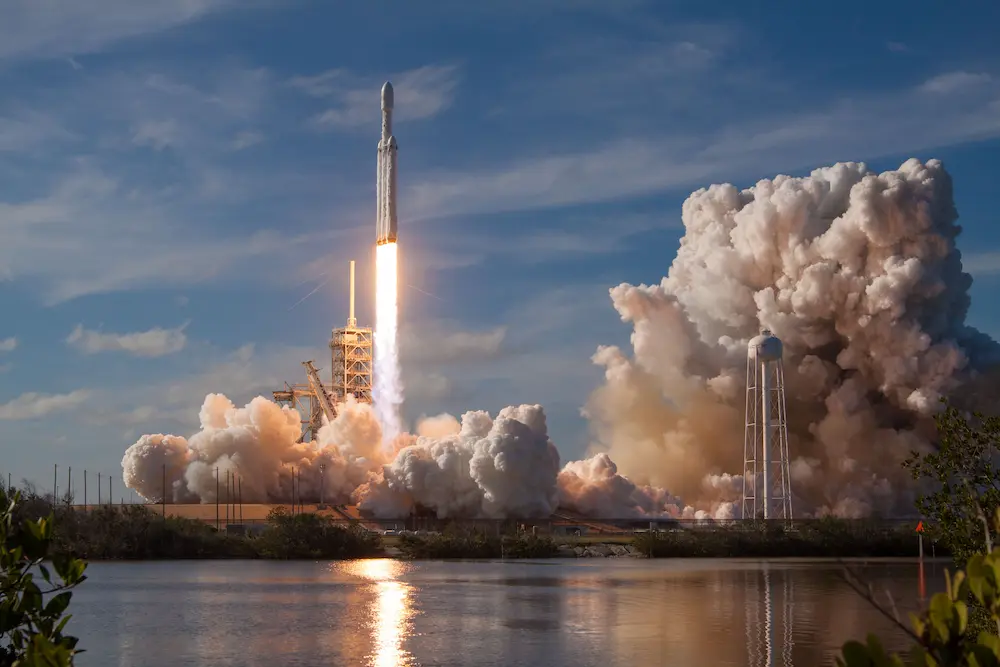
The Falcon Heavy is a cost-effective option for launching payloads into space.
The rise of private space companies
With private space companies, the opportunity for civilians to book a trip to space similar to booking a flight came closer to reality. Dennis Tito was the first private citizen to pay for a trip to space with a trip to the ISS from April 28th to May 6th, 2001 for $20 million dollars. Tito purchased his experience through Space Adventures Inc. which was founded in 1998 and offers a variety of different space experiences. They even acquired Zero Gravity Corporation, NASA’s provider of Reduced Gravity Training (not in space) for its astronauts, in 2008. They offer similar experiences for private individuals starting at about $8,200 as of this publishing (December 2022).
Space Adventures sent seven other space tourists to the ISS through 2009, but due to a number of factors, Space Adventures had to put their ISS offerings on hold until 2021 when they were able to purchase two Soyuz seats due to NASA moving their contract to SpaceX. Space Adventures sent two people to the ISS via the Roscosmos Soyuz rocket in December 2021 and is working on expanding its offerings.
In addition to Elon Musk’s SpaceX, there are a number of other private space companies getting into the commercial spaceflight/ space tourism market, most notably Richard Branson’s Virgin Galactic and Jeff Bezos’s Blue Origins.
Flight Providers & Rates
What are the current rates for commercial spaceflight tickets? What commercial spaceflight trips have already happened? All prices are per person/ per seat.
SpaceX has had the most experience in sending humans to space thanks to its partnership with NASA and Musk has made it clear that he wants to make space travel an option for the public. To date, SpaceX has offered two commercial spaceflight options and has one big one planned for the future:
- SpaceX completed a Multi-Day Orbital Voyage, the first of their new plan to offer private astronaut experiences through their NASA partnership.
- Estimated $55 million for a 3-day stay inside a modified SpaceX Dragon capsule orbiting the Earth at 357 miles (574 km) with three crewmates, sponsored by billionaire Jared Isaacman to raise money for St Jude’s Children’s Hospital
- Partnership between SpaceX and Houston-based Axiom Space Inc.
- $55 million for a 10-day trip to ISS at 408 km with a weeklong (8-day) stay in the orbital lab.
- Expected to continue in 2023
- Axiom plans to build a stand-alone space station to replace the ISS with the first module expected to launch in 2024.
- Steve Aoki: American DJ and record producer
- Everyday Astronaut Tim Dodd: American science communicator, content creator, photographer, and musician
- Yemi A.D.: Czech choreographer, art director and performer
- Rhiannon Adam: Irish photographer
- Karim Iliya: British photographer and filmmaker
- Brendan Hall: American filmmaker and photographer
- Dev Joshi: Indian television actor
- Choi Seung-hyun (stage name: T.O.P.): South Korean rapper, singer, songwriter, record producer, and actor
- Cost is unknown, likely a minimum of $500 million
2. Blue Origin
Blue Origin: currently offers a 100km 12-minute ride to the Karman Line, the recognized boundary between Earth’s atmosphere and outer space; pricing is still unclear and dependent on a variety of factors
- On July 2021, Jeff and Mark Bezos went into space on the New Shepard rocket with Oliver Daemen (who won the trip through an auction bid of around 28 million) and honored guest Wally Funk (a member of Mercury 13, the private program in which women trained to be astronauts but ultimately never went to space)
- Blue Origin has completed 6 commercial space flights as of this publishing. Some “honorable guests” have been invited free of charge, such as Funk and actor William Shatner (Captain Kirk from the original Star Trek). Some have been sponsored or have received special deals due to their nonprofit status.
- $28 million winning auction bid for the first flight ( $19 million was donated)
- $1 million for a board member of a nonprofit
- About $1.25 for a Dude Perfect comedy group crew member, hosted by MoonDAO in August 2022
3. Virgin Galactic Subortbital Joy Ride
Virgin Galactic Subortbital Joy Ride: $450,000 for a 90-minute ride to suborbital space 50km above sea level
- In July 2021, founder Richard Branson flew to the edge of Earth’s atmosphere with two pilots and three other Virgin Galactic employees as the first test of commercial spaceflight for the company
- Each VSS Unity SpaceShipTwo carries up to four passengers
- Expected flights are currently anticipated to begin in 2023
- Includes training accommodations and amenities; launches from New Mexico
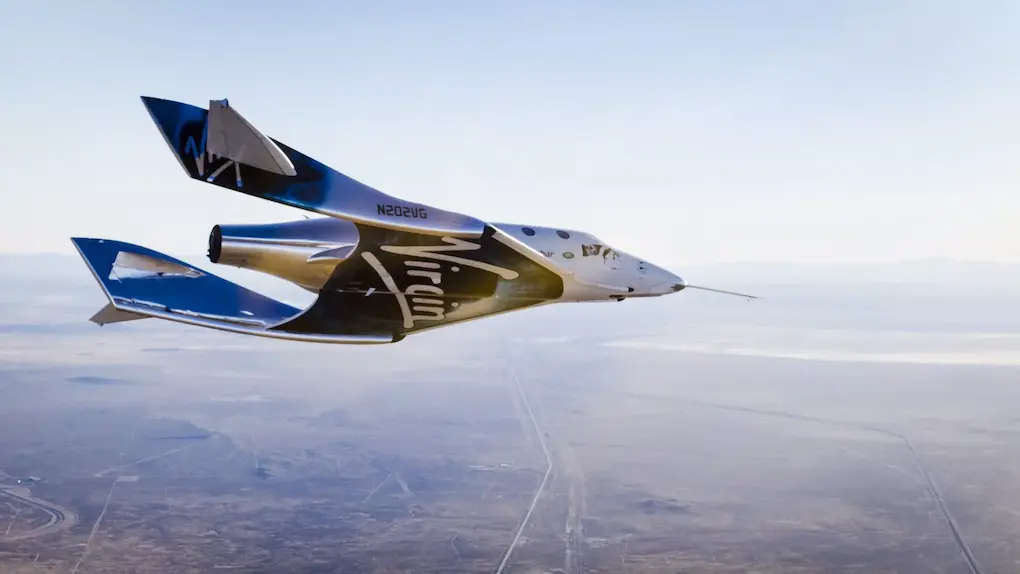
4. Roscosmos/ Space Adventures Customized ISS Trip
Roscosmos/ Space Adventures Customized ISS Trip: $50-60million for a 12-day trip to the ISS at 408 km
- In October 2021 an actress and director shot scenes for the first movie filmed in space
- December 2021 Japanese billionaire Yusaku Maezawa and Yozo Hirano for two days (same billionaire planning to go to the moon with SpaceX)
- With the current situation between Russia and Ukraine, this option is effectively nonexistent currently
5. Space Perspective
Space Perspective: a six-hour balloon ride to space/ the stratosphere on their “Spaceship Neptune” at $125,000
- Rides are currently scheduled to begin by the end of 2024.
- A pressurized capsule will be slowly lifted by a football-field-sized hydrogen-filled balloon 19 miles (30 km) into the stratosphere, about 3 times the altitude of commercial planes.
- The passenger cabin features a bar, bathroom, and windows for sightseeing and is expected to carry 8 passengers and 1 pilot per trip.
6. Aurora Space Station (no longer in development)
Aurora Space Station was supposed to be the world’s first luxury space hotel, offering a 12-day stay for $9.5 million allowing them to free float, observe space and earth, practice hydroponics and play in a hologram deck, but they shut down operations and refunded all deposits in March 2021. They received a lot of media attention and therefore are noted here due to that notoriety.
Conclusion: the current cost of flying to space
Currently, it is only available to those who can spend an average of $250,000 to $500,000 for suborbital trips (about a fifteen-minute ride to the edge of space and back) or flights to actual orbit at more than $50 million per seat (though typically a longer trip than 15 minutes).
It could be free/ discounted if you can find a sponsor, often for nonprofit/ charity purposes, or if you are someone of notoriety that can help spread the company’s mission.
Waitlists are available for most offerings, with a deposit, with many stretching years into the future, which might end up helping you have a spot at a more reasonable price in the future if you can save up.
Many companies are looking to provide extended stay options on private space stations in the future, similar to how you might book a flight somewhere and stay in a hotel for a few days. Again, for the immediate future, this is estimated to cost tens of millions of dollars. The biggest portion of the cost would be launching them, though it is still estimated that a couple million dollars will be needed to cover the expenses of your stay while you are on the space station, whether that is included in the ticket price or added on top of that.
Many companies are hopeful they can eventually price a trip to space down to $100,000 but that will likely take some time, even with the cost-saving measures of reusable boosters. Many forms of recent technology have evolved exponentially in recent years and with dropping price rates as well. Just as plane travel was originally prohibitively expensive, but has now become fairly reasonable for the average consumer, the hope is that the same will eventually happen with space tourism, but we will have to see how long that takes.
While the possibility of going to space is still out of reach for many of us, hopefully, the advancements in recent years and those yet to come will help to continually lower the costs of going to space, just as has occurred in many other fields. This author, for one, truly hopes that the interest of the elite who are currently able to participate in these offerings will spur research and development, not just of space tourism but space exploration in general, to help fuel a quicker journey to space access for all

Written by Sarah Hoffschwelle
Sarah Hoffschwelle is a freelance writer who covers a combination of topics including astronomy, general science and STEM, self-development, art, and societal commentary. In the past, Sarah worked in educational nonprofits providing free-choice learning experiences for audiences ages 2-99. As a lifelong space nerd, she loves sharing the universe with others through her words. She currently writes on Medium at https://medium.com/@sarah-marie and authors self-help and children’s books.
Wow! There's more to read 🚀
This page is part of our collection of articles about astronauts . If you enjoyed the read, then you’ll love the following articles.

How much do astronauts get paid?
The requirements to become an astronaut are extremely rigorous. Does their salary match the difficulty of their profession?
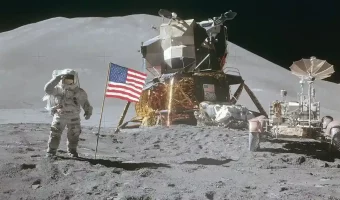
How many flags are on the Moon? The up-to-date list
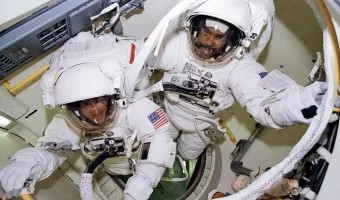
What are the different types of astronauts suit?

How do astronauts train for zero-gravity environments?
We have completed maintenance on Astronomy.com and action may be required on your account. Learn More

- Login/Register
- Solar System
- Exotic Objects
- Upcoming Events
- Deep-Sky Objects
- Observing Basics
- Telescopes and Equipment
- Astrophotography
- Space Exploration
- Human Spaceflight
- Robotic Spaceflight
- The Magazine
Six ways to buy a ticket to space in 2021
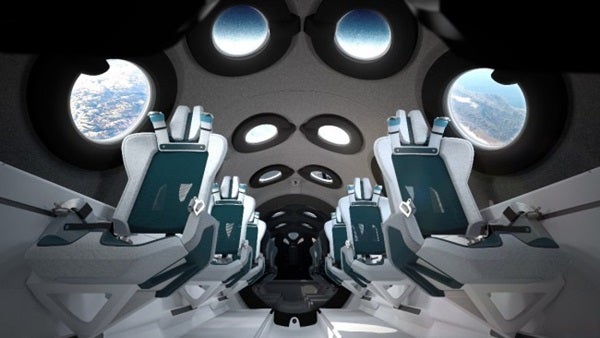
Earlier this month, SpaceX’s Crew Dragon capsule safely ferried NASA astronauts Doug Hurley and Robert Behnken back to Earth following a multi-month trip to the International Space Station (ISS). No privately built spacecraft had ever carried humans into orbit before. But unlike SpaceShipOne, which was a single craft built specifically to win a prize, there are multiple models of the Crew Dragon, each designed to be reused.
It’s finally looking like the exciting era of space tourism is about to erupt. A handful of so-called “new space” companies are now competing to sell space tourists trips on private spacecraft. Each one has a slightly different means of reaching space, and not all of them will get you all the way into orbit. But as long as you’re rich, you should have no problem purchasing your ticket to space.
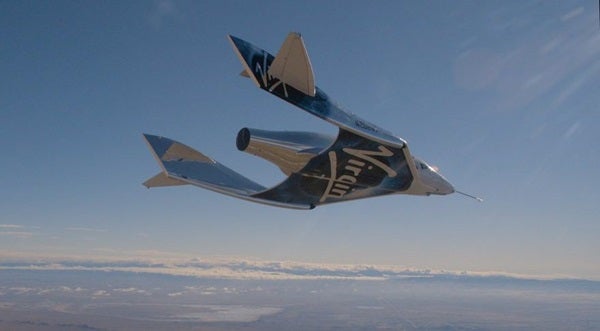
Virgin Galactic
SpaceShipOne was retired after just three successful spaceflights, but the technology lives on in Virgin Galactic’s Spaceship Unity . Like its predecessor, Virgin Galactic’s rocketplane drops from a specially engineered aircraft before boosting itself to 50 miles (80 kilometers) in altitude. That’s high enough for Virgin Galactic’s pilots to earn their astronaut badges. However, others define space via the so-called Kármán line, the generally accepted boundary between Earth’s atmosphere and space that sits 62 miles (100 kilometers) above our planet’s surface.
Virgin Galactic’s goal is to become “the world’s first commercial spaceline,” and eventually they’ll offer regular flights from Spaceport America in southern New Mexico. The company is planning to begin regular flights in early 2021, with CEO Richard Branson slated as the first non-professional pilot to travel on Spaceship Unity .
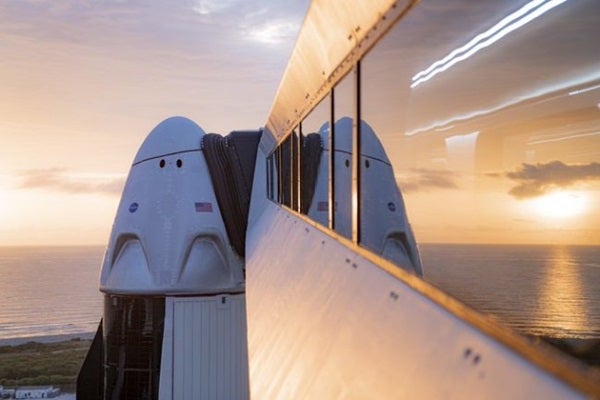
SpaceX is the only private rocket company to ever send a human into orbit. They’re also the only company now NASA-certified to send people to circle Earth. So, when will SpaceX start selling tickets to private citizens for trips to space? In the past, Elon Musk has said that the spacecraft could have a bright future carrying private passengers into orbit. And SpaceX recently announced that it has already sold seats on future Crew Dragon flights through other companies that are handling the logistics.
Ultimately though, Musk’s goal is to settle Mars. And to do that, he needs a bigger spacecraft. That’s why SpaceX’s engineers are working feverishly on its Starship, which is still under development. If the enormous spaceship works, it could literally rocket dozens of space tourists at a time between a number of destinations on Earth, or perhaps throughout the inner solar system. The company says that Starship would be able to travel between any two locations on Earth in less than one hour.
SpaceX is confident enough in their vessel that they already sold a Starship flight around the Moon to Japanese billionaire Yusaku Maezawa. No human has traveled to the Moon in nearly 50 years, and Maezawa, a fashion designer and online clothing retailer, has said he’ll take a group of artists with him.
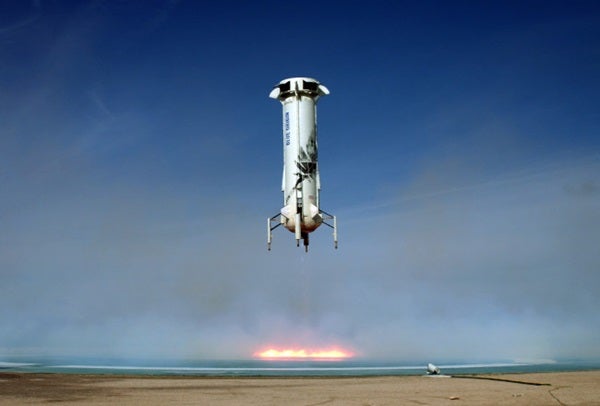
Blue Origin
Jeff Bezos started his rocket company, Blue Origin, back in 2000. And he’s been selling Amazon stock to pump billions of dollars into the effort ever since. Like SpaceX, they’re prioritizing reusable rockets and spacecraft that can drastically reduce the cost associated with spaceflight.
Much of Blue Origin’s effort has gone into developing a pair of rockets: New Shepard and New Glenn.
New Shepard can carry six people inside a suborbital capsule some 60 miles (100 km) into space. Blue Origin has already flown a dozen test flights, and they’re still planning several additional tests before launching passengers. However, in March, Axios reported that Blue Origin could send passengers into space in 2020, though COVID-19 has caused delays across the space industry. If the company can still get its space capsule tested in 2020, it could be on course for paid flights in 2021.
Meanwhile, Blue Origin has announced that it will soon start selling tickets. The company’s website doesn’t list the price of a Blue Origin trip, but Bezos has previously said their space tourists can expect to pay hundreds of thousands of dollars to fly in its New Shepard capsule.
The company is also working hard on their New Glenn rocket, a heavy-lift, reusable launch vehicle that Blue Origin has already invested more than $2.5 billion into developing. It’s larger than SpaceX’s Falcon Heavy rocket, but smaller than the rocket planned with Starship. That size could eventually enable regular passenger trips into orbit and even beyond. The company will need that capacity, too. Blue Origin’s goal is to one day have millions of people living and working in space.
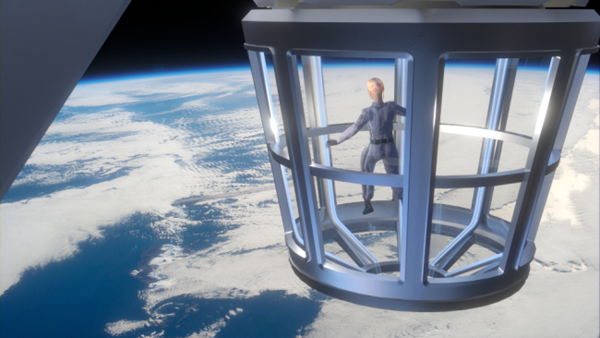
Axiom Space’s goal is to create the world’s first commercial space station. In the meantime, they’ve inked a deal to send a crew of private citizens to the ISS aboard SpaceX’s Crew Dragon capsule in October 2021.
Axiom’s initial crewed mission, dubbed Ax1, should send three paying astronauts to the ISS. Each ticket reportedly costs $55 million. And while it might seem like there’s a small pool of potential ticket buyers at that rate, in the U.S. alone, roughly 75,000 American households have that much money. Axiom also figures it’s just getting started selling tickets to space. In the near future, the company says it will send three crews a year to the ISS.
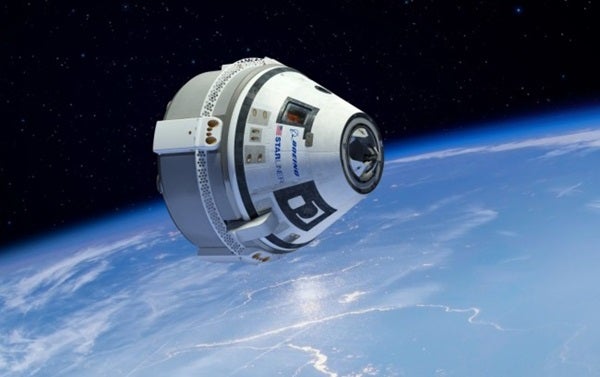
Back in 2014, NASA selected two companies — SpaceX and Boeing — to receive multibillion-dollar contracts to build spacecraft that could ferry astronauts to the ISS. SpaceX made good on the first crewed flight of its Commercial Crew Program contract earlier this year. Meanwhile, Boeing has yet to get its Starliner spacecraft safely to the ISS and back. Their first test flight reached orbit but failed to make the space station, and a NASA review outlined numerous necessary fixes.
Boeing will attempt another uncrewed test flight next year. And if all goes well, they could fly to the ISS by late 2021.
But once Boeing is flying to and from the ISS, the iconic aerospace company is also technically allowed to fly private passengers to the space station. They’ve been quiet on this option, but NASA has said they’d accommodate passengers at a rate of $35,000 per night.
Boeing has also hired a corporate test pilot astronaut, Christopher Ferguson. He’s been training alongside NASA’s astronauts and will be among the first to fly on Starliner. He might not count as a space tourist, but Ferguson will ultimately be part of an entirely new group of professional astronauts that work for private companies, not national space agencies.
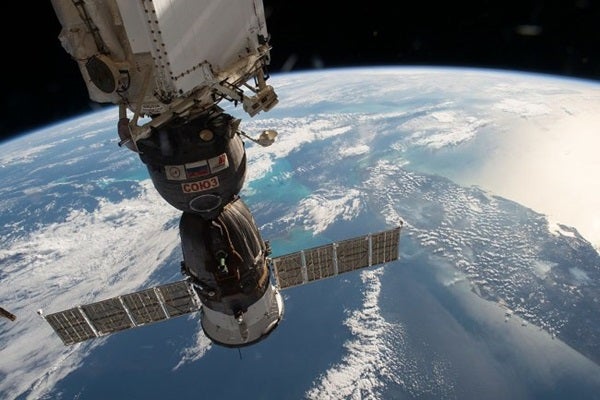
Space Adventures
Space Adventures is an American company that offers private spaceflights to the ISS and, eventually, the moon. Since their founding in 1998, the company has sold a number of other spaceflight related experiences, like simulated zero-gravity airplane flights. And unlike their competitors, Space Adventures has sent space tourists into orbit, too. They’ve been responsible for over half a dozen paid trips to the ISS that made use of Russian spacecraft.
Most recently, they booked a launch to the space station on Russia’s veteran Soyuz spacecraft, which is set for December 2021. The mission, dubbed Soyuz MS-20, will fly with a lone cosmonaut and two Space Adventures tourists.
Space Adventures has arranged another path to get paying customers into space, too. They recently announced a deal with SpaceX that will put four space tourists in a SpaceX capsule and send them into orbit around Earth. How much will it cost? For now, both companies are keeping the cost of these tickets private. But those who do make the trip should get an excellent show. The mission will orbit at several times the height of the ISS.
Unfortunately, few of us have enough disposable income to fund a trip beyond Earth’s atmosphere. But with at least a half dozen ways for the wealthy to purchase a ticket into space next year, the hope is that the cost will continue to decline. And if that happens, you might be closer than you think to regularly having your rocket pass checked by the TSA.
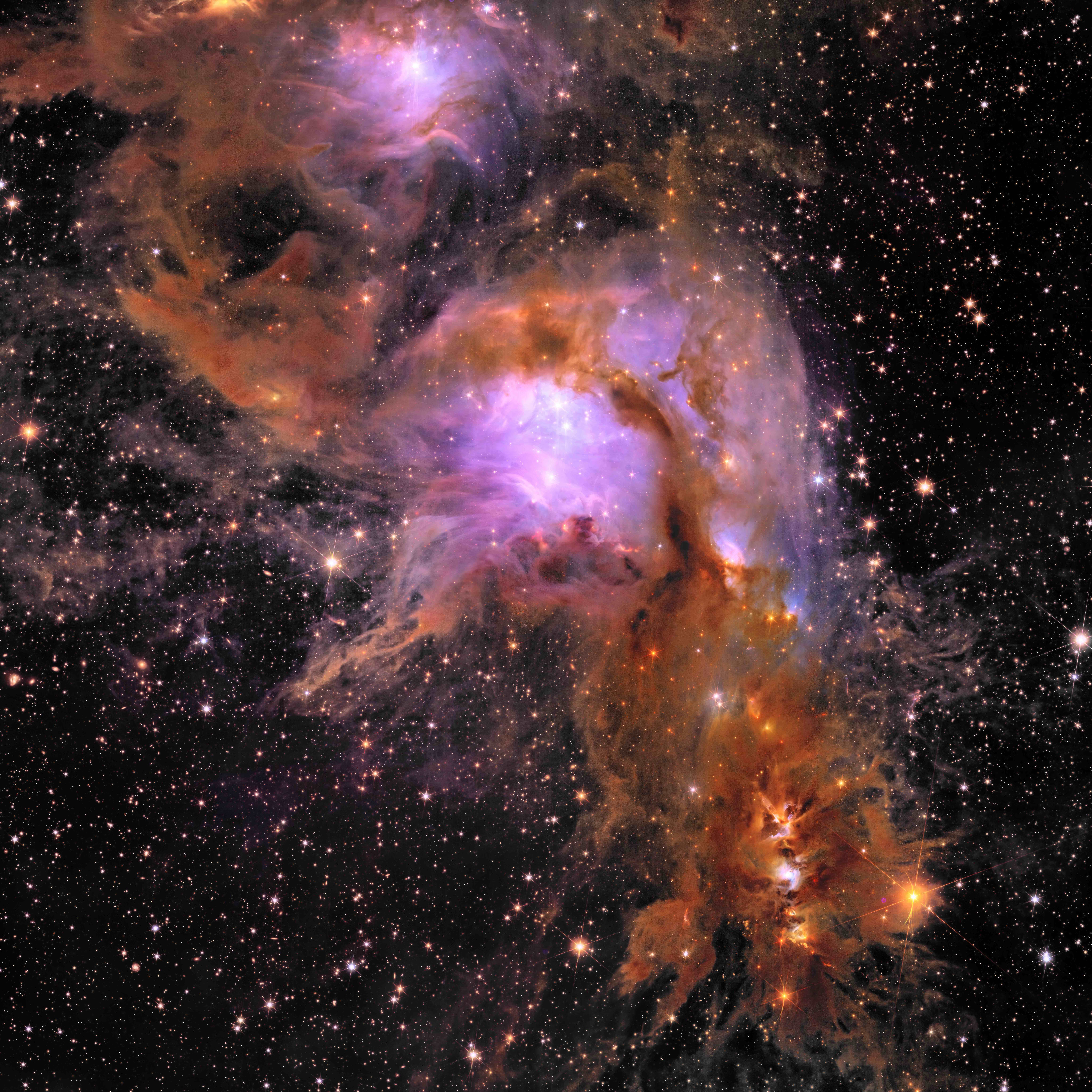
Euclid’s new portraits of the dark universe are filled with detail, and wonder

‘It ain’t no garbage.’ Canadian farmer finds chunks of space debris in a remote part of Saskatchewan
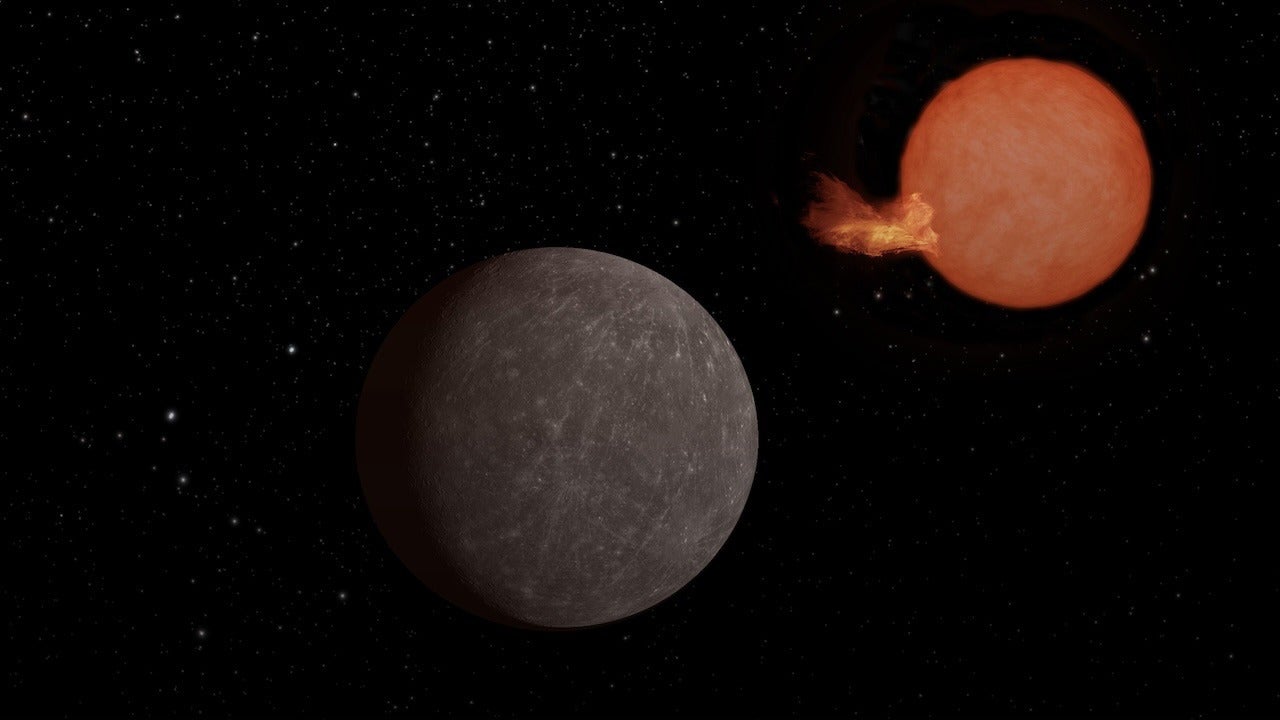
Found: An Earth-sized exoplanet named SPECULOOS-3 b
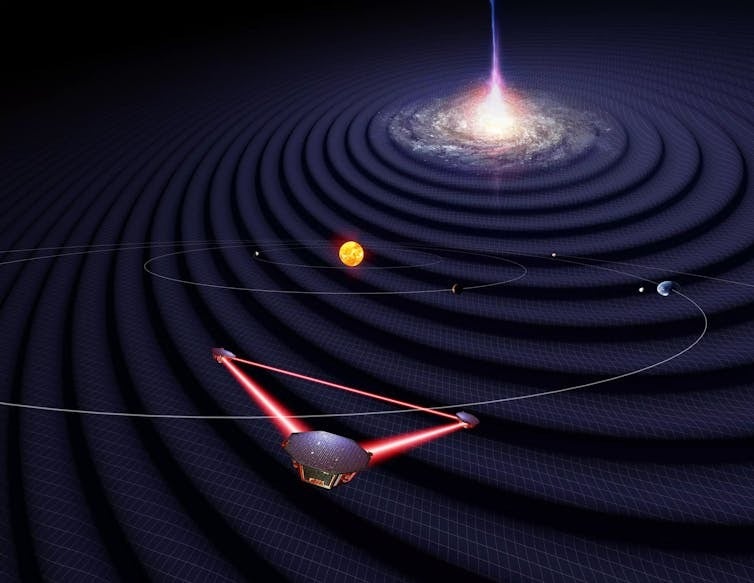
‘Hairy’ black holes may get a massive glow-up from the LISA spacecrafts
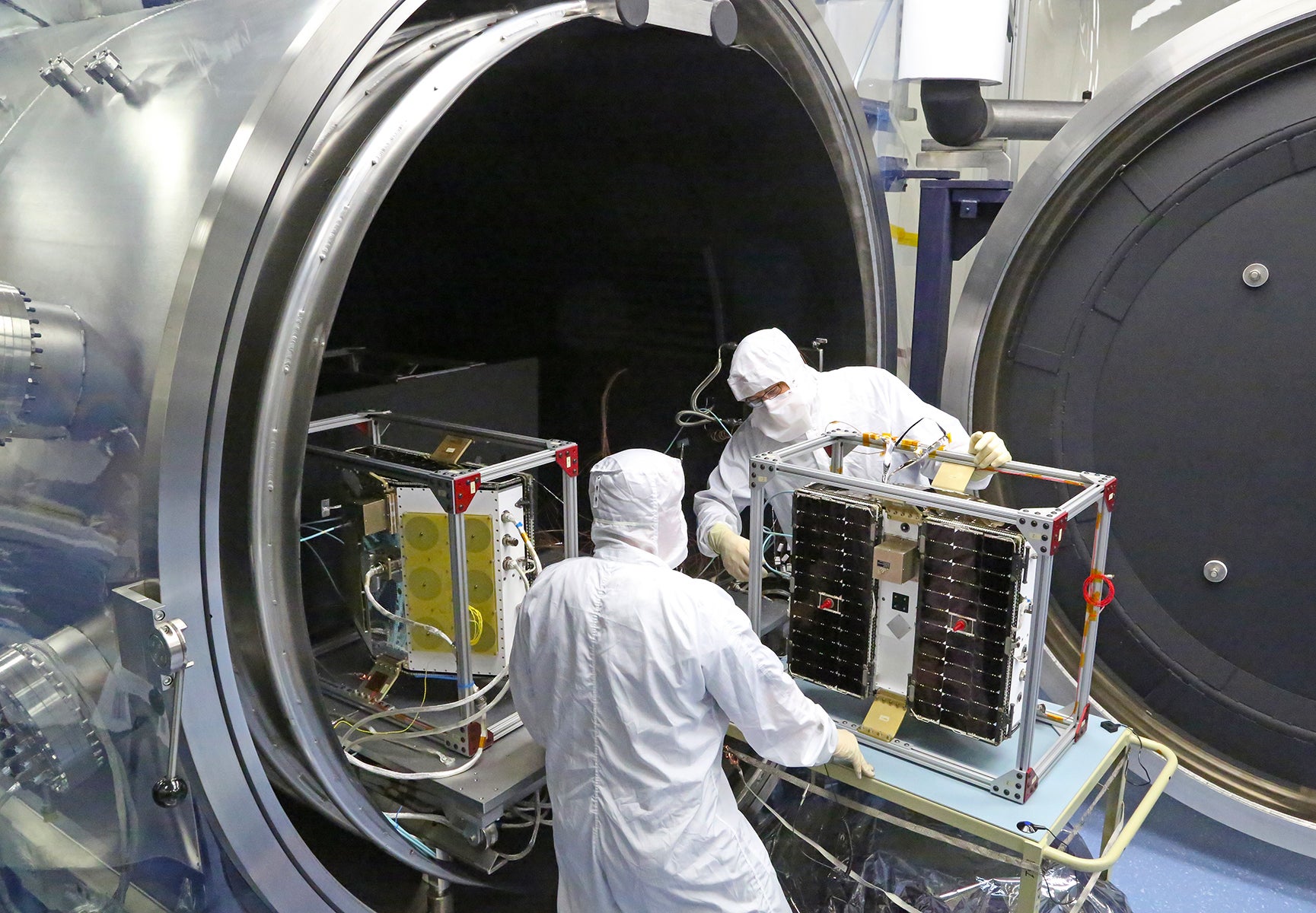
A visit to the cutting-edge Southwest Research Institute
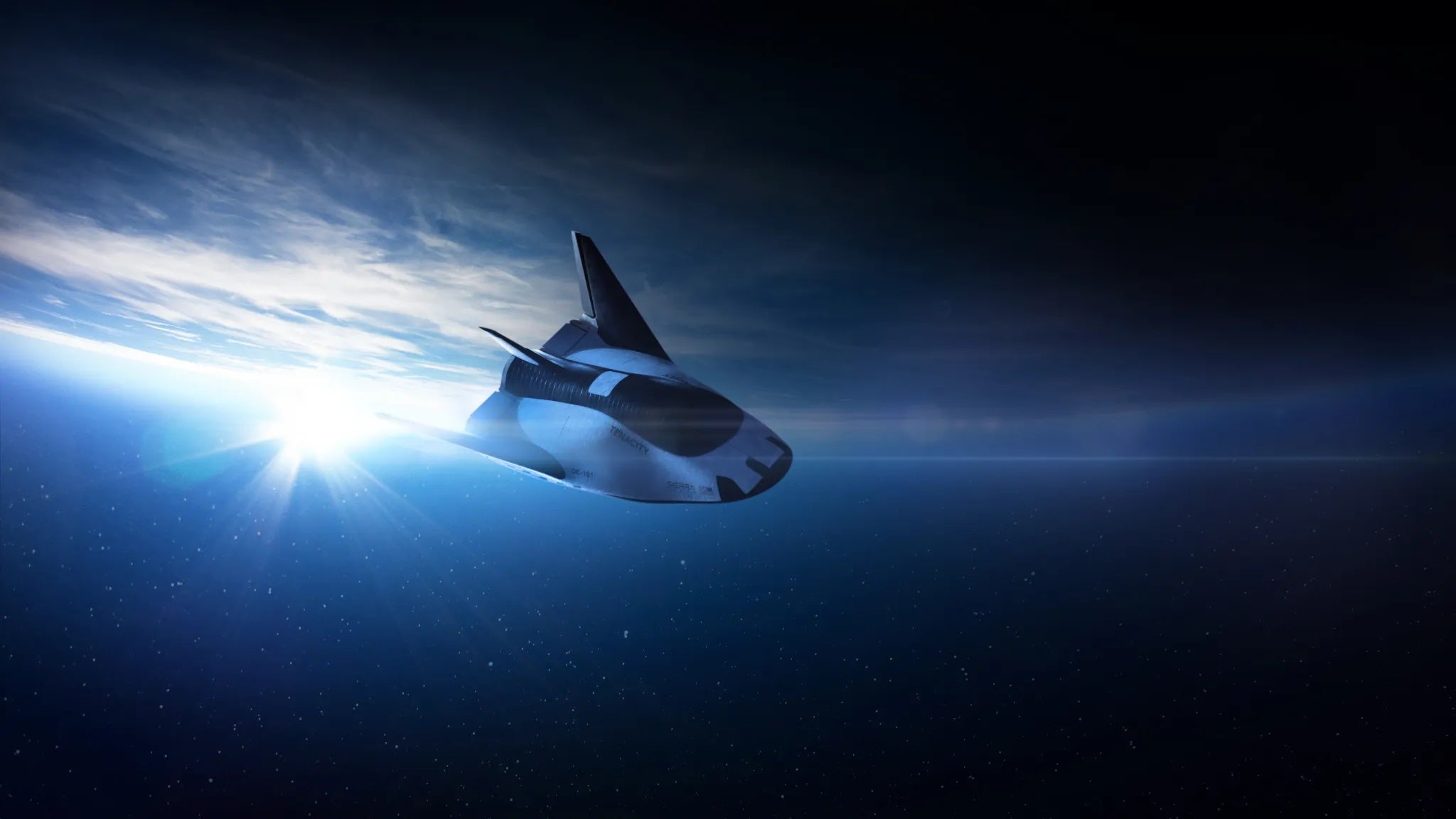
Dream Chaser spaceplane completes tests at NASA’s Neil Armstrong facility
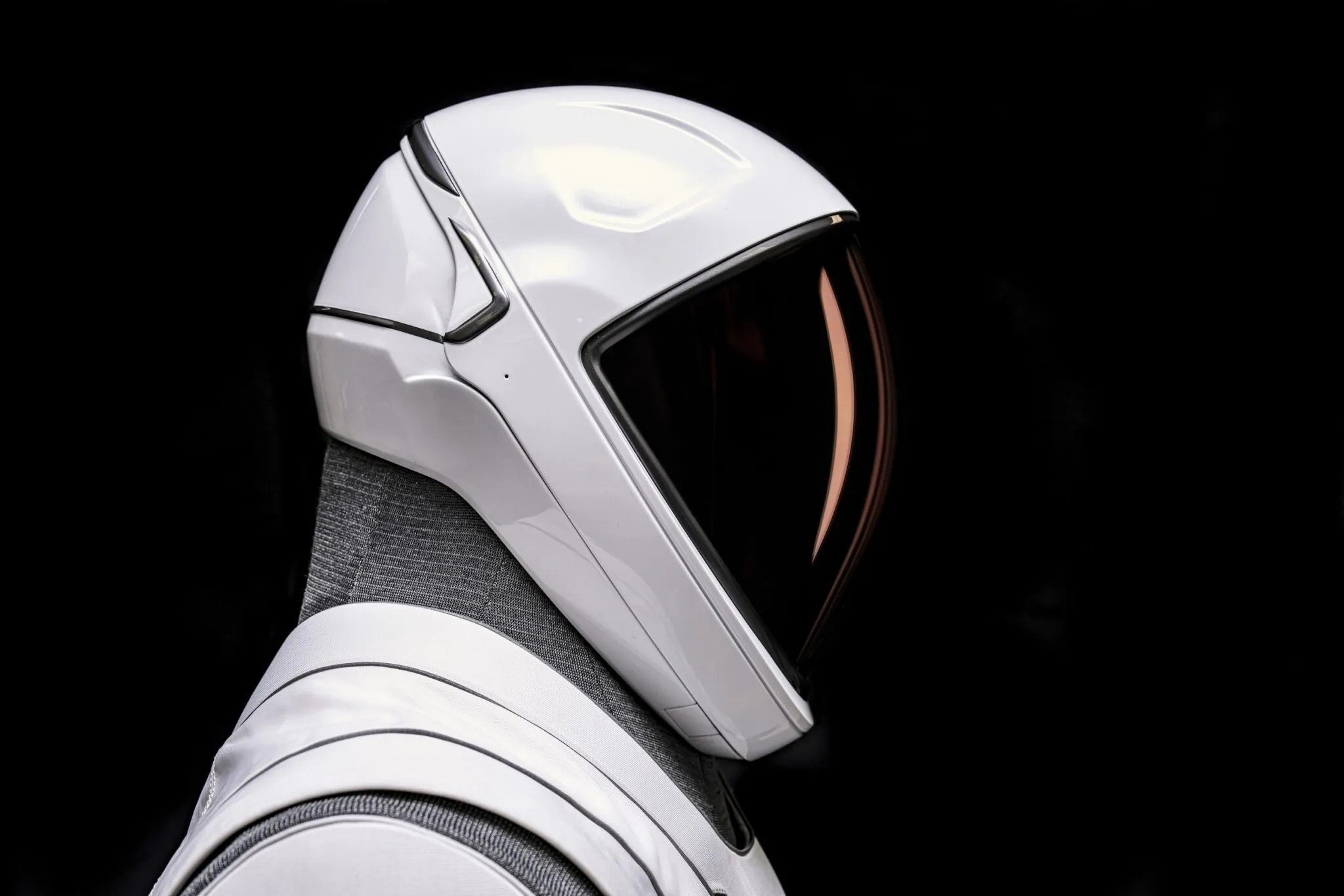
What Is Polaris Dawn? The upcoming SpaceX mission, explained
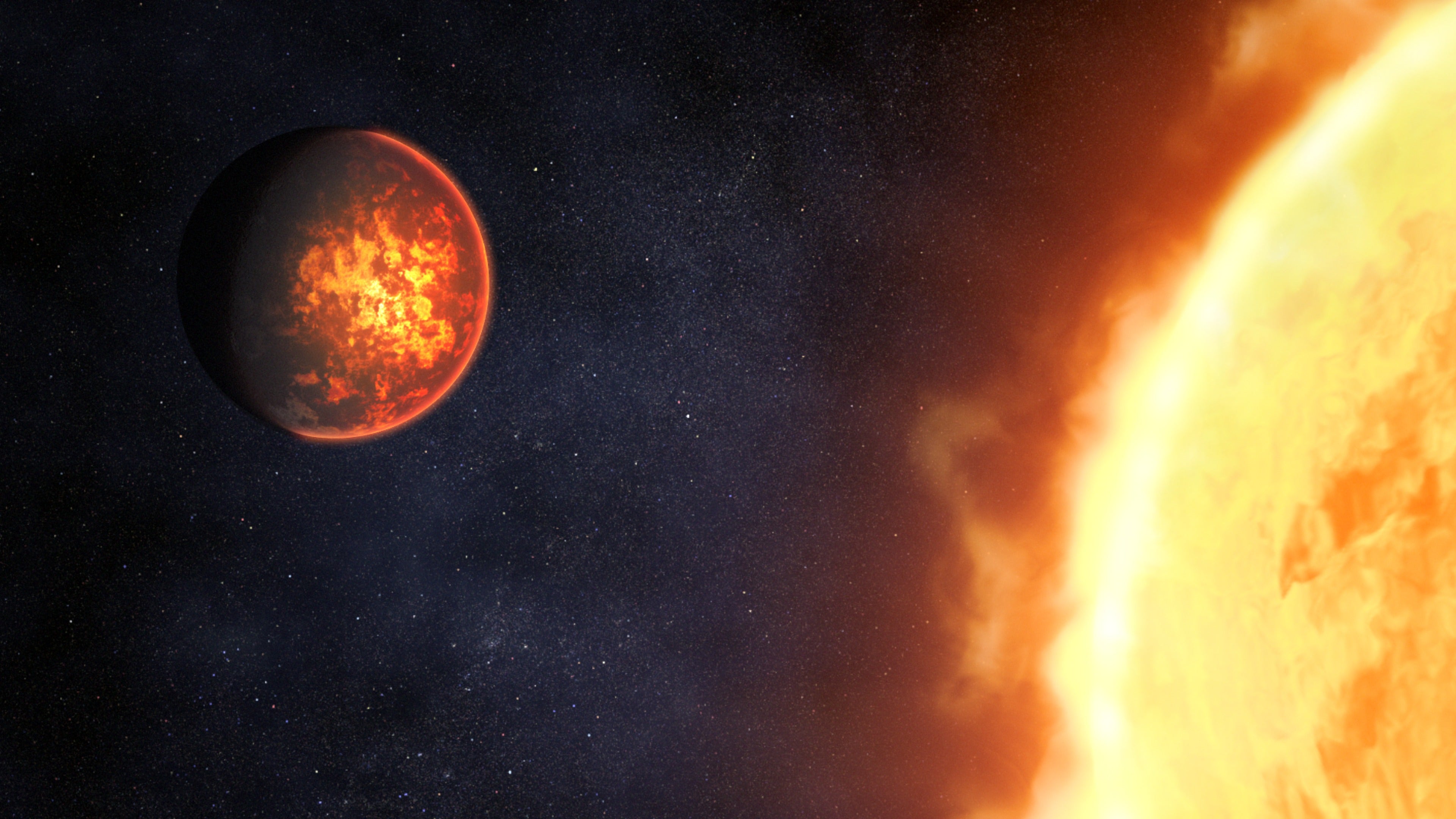
At last! JWST finds signs of a thick atmosphere around a rocky exoplanet
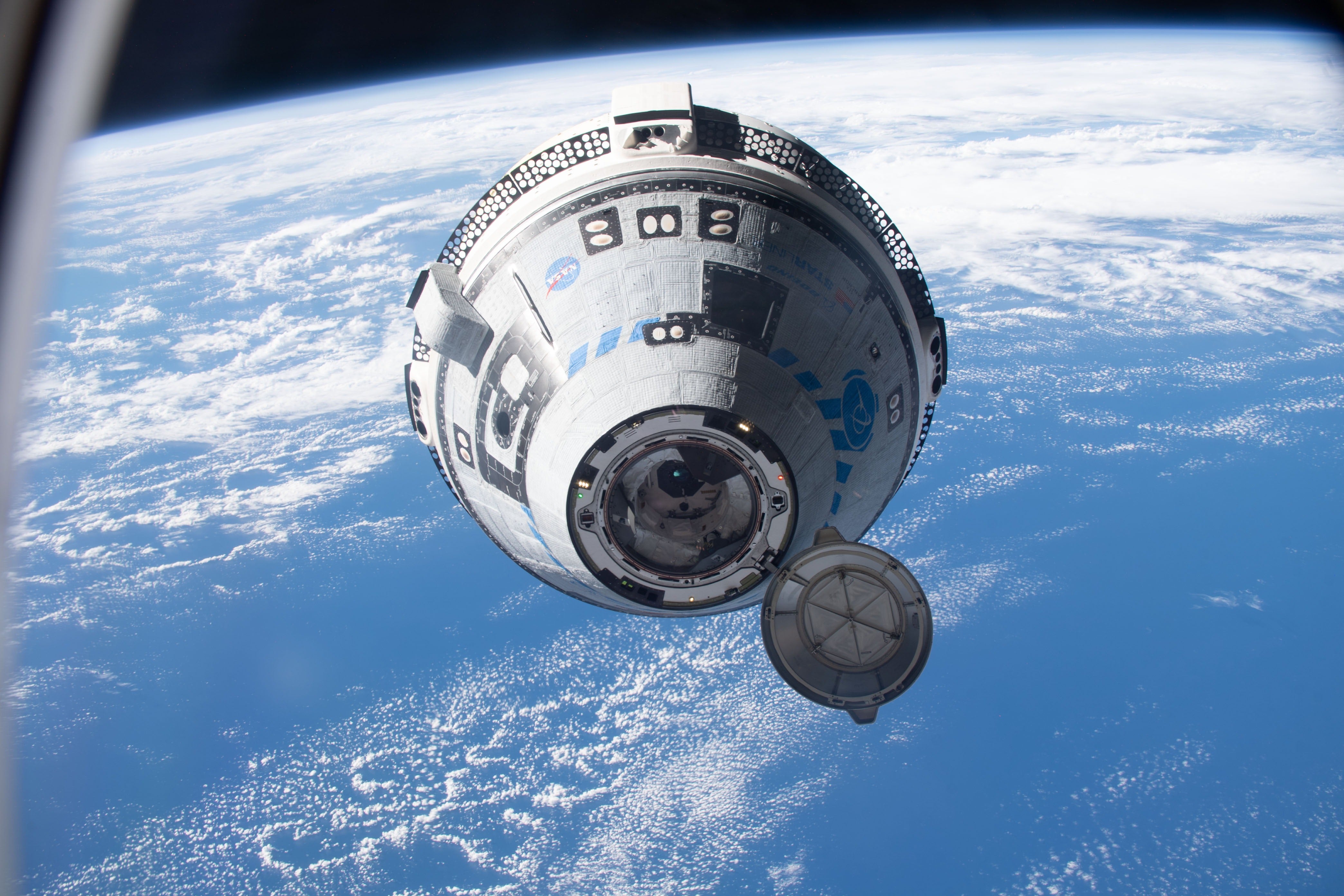
Boeing’s Starliner launch – delayed again – will be an important milestone for commercial spaceflight
- Election 2024
- Entertainment
- Newsletters
- Photography
- Personal Finance
- AP Investigations
- AP Buyline Personal Finance
- AP Buyline Shopping
- Press Releases
- Israel-Hamas War
- Russia-Ukraine War
- Global elections
- Asia Pacific
- Latin America
- Middle East
- Election Results
- Delegate Tracker
- AP & Elections
- Auto Racing
- 2024 Paris Olympic Games
- Movie reviews
- Book reviews
- Personal finance
- Financial Markets
- Business Highlights
- Financial wellness
- Artificial Intelligence
- Social Media
Ed Dwight, America’s first Black astronaut candidate, finally goes to space 60 years later
America’s first Black astronaut candidate has finally made it to space 60 years later, flying with Jeff Bezos’ rocket company. Ninety-year-old Ed Dwight blasted off from West Texas with five other passengers on Sunday. Dwight was an Air Force pilot when President John F. Kennedy championed him as a NASA astronaut candidate. But he wasn’t picked.
FILE - Former NASA astronaut Ed Dwight poses for a portrait to promote the National Geographic documentary film “The Space Race” during the Winter Television Critics Association Press Tour, Thursday, Feb. 8, 2024, at The Langham Huntington Hotel in Pasadena, Calif. America’s first Black astronaut candidate has finally made it to space 60 years later, flying with Jeff Bezos’ rocket company. Ninety-year-old Dwight blasted off from West Texas with five other passengers on Sunday, May 19, 2024. (AP Photo/Chris Pizzello, File)
- Copy Link copied
VAN HORN, Texas (AP) — Ed Dwight , America’s first Black astronaut candidate, finally rocketed into space 60 years later, flying with Jeff Bezos’ rocket company on Sunday.
Dwight was an Air Force pilot when President John F. Kennedy championed him as a candidate for NASA’s early astronaut corps. But he wasn’t picked for the 1963 class.
Dwight, now 90, went through a few minutes of weightlessness with five other passengers aboard the Blue Origin capsule as it skimmed space on a roughly 10-minute flight. He called it “a life changing experience.”
“I thought I really didn’t need this in my life,” Dwight said shortly after exiting the capsule. ”But, now, I need it in my life .... I am ecstatic.”
The brief flight from West Texas made Dwight the new record-holder for oldest person in space — nearly two months older than “Star Trek” actor William Shatner was when he went up in 2021.
It was Blue Origin’s first crew launch in nearly two years. The company was grounded following a 2022 accident in which the booster came crashing down but the capsule full of experiments safely parachuted to the ground. Flights resumed last December, but with no one aboard. This was Blue Origin’s seventh time flying space tourists.
Dwight, a sculptor from Denver, was joined by four business entrepreneurs from the U.S. and France and a retired accountant. Their ticket prices were not disclosed; Dwight’s seat was sponsored in part by the nonprofit Space for Humanity.
Dwight was among the potential astronauts the Air Force recommended to NASA. But he wasn’t chosen for the 1963 class, which included eventual Gemini and Apollo astronauts, including Apollo 11’s Buzz Aldrin and Michael Collins. NASA didn’t select Black astronauts until 1978, and Guion Bluford became the first African American in space in 1983. Three years earlier, the Soviets launched the first Black astronaut, Arnaldo Tamayo Mendez, a Cuban of African descent.
After leaving the military in 1966, Dwight joined IBM and started a construction company before earning a master’s degree in sculpture in the late 1970s. He’s since dedicated himself to art. His sculptures focus on Black history and include memorials and monuments across the country. Several of his sculptures have flown into space.
The Associated Press Health and Science Department receives support from the Howard Hughes Medical Institute’s Science and Educational Media Group. The AP is solely responsible for all content.
Watch CBS News
First Black astronaut candidate, now 90, finally reaches space in Blue Origin flight
By William Harwood
Updated on: May 20, 2024 / 10:24 AM EDT / CBS News
Ed Dwight, a 90-year-old artist and former Air Force test pilot who was denied a chance to become the first African American astronaut six decades ago, finally rocketed into space on Sunday, fulfilling a cherished dream in a brief up-and-down flight out of the lower atmosphere.
"Absolutely fantastic!" he exclaimed after touchdown. "A life-changing experience. Everybody needs to do this!"

Strapped into a Blue Origin New Shepard capsule, Dwight and five crewmates -- a retired accountant, an Indian pilot and adventurer, a software engineer, a French entrepreneur, and a venture capitalist -- blasted off from company owner Jeff Bezos' West Texas launch site just after 10:35 a.m. EDT, climbing away into a cloudless sky.
It was the company's first New Shepard flight with passengers aboard since a booster failure two years ago derailed an unpiloted research flight. A successful repeat mission late last year, also without a crew on board, cleared the way for the resumption of passenger flights.
"There was a part of my career that wasn't quite fulfilled, and here's a grand opportunity at this late date to fulfill that for self-satisfaction, yes," Dwight said in a pre-launch interview with CBS News. "But more importantly, to satisfy all the wonderful people that have showered me with love for all these years. Because it is those people that wanted me to go into space in the worst kind of way. To them (this) is justice."
During the 10-minute sub-orbital flight on Sunday, the New Shepard's single-stage hydrogen-fueled rocket accelerated the crew capsule to more than 2,100 mph at an altitude of 185,000 feet before releasing it to continue coasting upward. Weightless at that point, the crew reached an altitude of about 65 miles, a few miles above the internationally recognized "boundary" between the discernible atmosphere and space.

Between booster cutoff and the capsule's re-entry, the six crew members were able to unstrap and enjoy about three minutes of weightlessness, taking in spectacular views of the Earth below as the spacecraft arced over the top of its trajectory for descent to a parachute-assisted touchdown a few thousand yards from the launch pad.
"I didn't think I needed this in my life," Dwight said after climbing out of the capsule. "I lied!"
One of the spacecraft's three main parachutes failed to inflate fully, but the spacecraft is designed to land with just two chutes safely, and the crew, all smiles after touchdown, obviously had no problems.
At 90 years and eight months old, Dwight is the oldest person ever to fly in space, edging out actor William Shatner, who launched aboard a New Shepard at age 90 in 2021 , by a few months. Aviatrix Wally Funk, who joined Bezos for the company's first piloted flight, ranks third on the list of "most senior" astronauts, flying at age 82.
A ticket to ride on a New Shepard is believed to cost around $500,000. Dwight's seat was sponsored by the non-profit Space for Humanity with support from the Jaison and Jamie Robinson Foundation. Jaison Robinson flew aboard a New Shepard in 2022.
Dwight's crewmates -- venture capitalist Mason Angel, French entrepreneur Sylvain Chiron, software engineer Kenneth Hess, retired accountant and adventurer Carol Schaller, and Gopi Thotakura, a commercial airline pilot and the second Indian national to fly in space -- are believed to have paid for their seats, but the actual costs are not known.

Before launch, Dwight told CBS News he looked forward to seeing "the beautiful little round ball we call the Earth that we're not doing a very good job of taking care of, by the way. But it allows you to have a different perspective."
"I have this theory that I think every politician that runs for public office in the United States of America needs to do at least three orbits around the Earth so they can see what this place is all about," he said. "And they would stop destroying it. That's my wish. That would be a requirement for everybody that ran for political office on a national level."
As NASA's Mercury program was ramping up in the early 1960s, President John F. Kennedy let it be known that he wanted an African American in the space agency's astronaut corps. Dwight got the nod and trained at the Aerospace Research Pilot School at Edwards Air Force Base, passing through the initial round of training.
But NASA did not select him as an astronaut, and he resigned from the Air Force in 1966 with the rank of captain. After stints in the private sector, Dwight earned a master of fine arts degree in sculpture, focusing on black history pioneers. He owns and operates Ed Dwight Studios in Denver.
"I've had, you know, 60 years to sit on and think about all the parts and pieces of this," he told CBS News correspondent Jericka Duncan. "But the reason I have even the slightest bit of interest in going into space right now is that I've had a group of fans that have followed me from 1964, several generations, the fan mail has never stopped.
"The more I thought about it, what better way to fulfill my fans for the things that they've been asking me about for the last 60 years? And the opportunity came to fly into space."

He said African American astronaut Leland Melvin first broached the idea while the two were working on "The Space Race," a documentary about the history of Black astronauts and engineers in NASA's space program.
"This all happened in relatively short period of time," Dwight said. "We had been working on 'Space Race,' and we had been traveling around the country doing film festivals. We were involved in Q & A's (and) how would you like to go up?" Melvin had contacts at Blue Origin, he added, "so it just evolved."
Blue Origin was on a launch-per-month pace in September 2022 when an uncrewed New Shepard carrying 36 experiments suffered a booster failure one minute after liftoff, triggering an automatic abort. The capsule was propelled away from the booster and landed normally a few minutes later.
The abort was blamed on the failure of the nozzle of the BE-3 engine powering the New Shepard rocket. After an extensive investigation, Blue Origin modified the rocket to prevent any similar malfunctions and successfully launched another unpiloted research flight in December 2023, clearing the way for the resumption of passenger flights.
Blue Origin's New Shepard is competing against Richard Branson's Virgin Galactic to carry space tourists, professional astronauts and others on sub-orbital space flights. Virgin Galactic has launched 55 passengers on 11 flights of the company's Unity spaceplane so far while Blue Origin has now launched 38 men and women on seven flights.
While Virgin is focused solely on sub-orbital flights, Blue Origin also is building a moon lander and a partially reusable orbital-class rocket -- the New Glenn -- to compete against SpaceX's workhorse Falcon 9 and Falcon Heavy boosters.
- Virgin Galactic
- Blue Origin
Bill Harwood has been covering the U.S. space program full-time since 1984, first as Cape Canaveral bureau chief for United Press International and now as a consultant for CBS News.
More from CBS News

Storytelling program helps veterans return home and cope with trauma
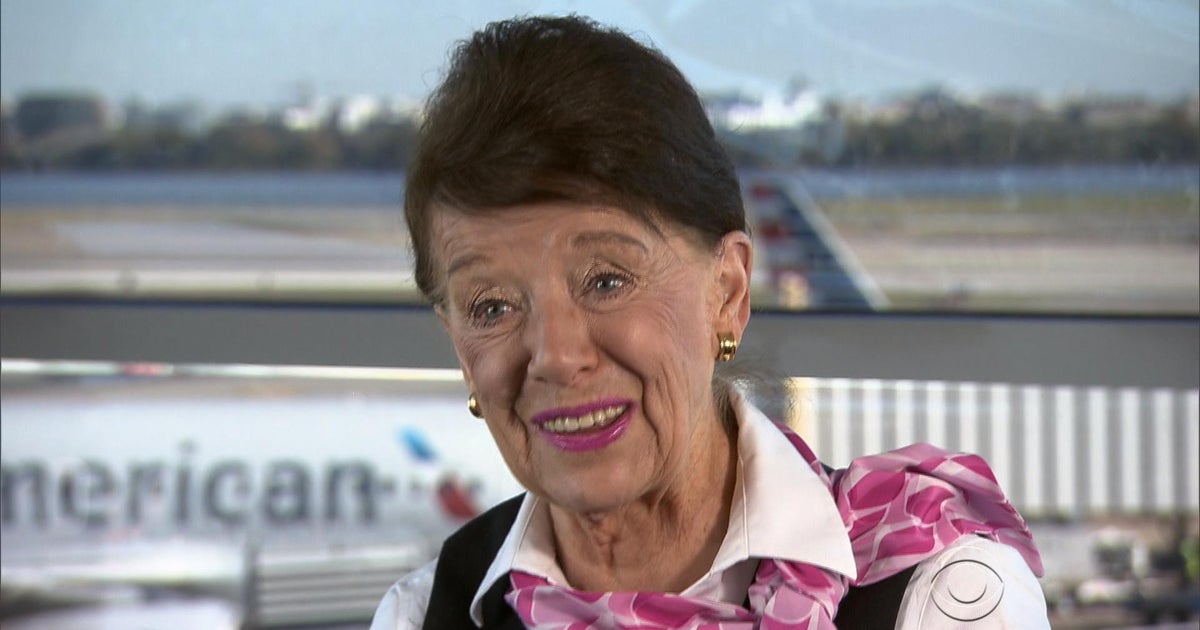
Nation's longest-serving flight attendant dies at 88: "Fly high, Bette"

Military plane goes down near Albuquerque airport; pilot hospitalized

Israel airstrike in Rafah kills dozens as Netanyahu admits "tragic mishap"
- Skip to main content
- Keyboard shortcuts for audio player
On a Blue Origin rocket, Ed Dwight, 90, realizes his dream of space flight
Sixty-one years ago Dwight was an astronaut candidate. Sunday, along with five others, he made the trip on a rocket owned by Amazon founder Jeff Bezos — making him the oldest person to go to space.
Copyright © 2024 NPR. All rights reserved. Visit our website terms of use and permissions pages at www.npr.org for further information.
NPR transcripts are created on a rush deadline by an NPR contractor. This text may not be in its final form and may be updated or revised in the future. Accuracy and availability may vary. The authoritative record of NPR’s programming is the audio record.

IMAGES
COMMENTS
New Shepard astronauts ascend toward space at more than three times the speed of sound. They pass the Kármán line, the internationally recognized boundary of space 62 miles (100 km) above Earth, before unbuckling to float weightless and gaze at our planet. The crew returns gently under parachutes, forever changed. In Their Own Words.
Oct. 13, 2021. Blue Origin has declined to publicly state a price for a ticket to fly on New Shepard. The company is nearing $100 million in sales so far, Mr. Bezos has said. But it's unclear ...
Commercial space travel is (obviously) a new market, so there isn't a lot to compare in terms of what a reasonable price for a trip to space equates to. Blue Origin's bidding process further ...
Patrick Pluel/Getty; Alex Wong/Getty; Hollis Johnson/Insider. Virgin Galactic's $250,000 ticket to the edge of space includes a spacesuit. Passengers paying $55 million for SpaceX's mission to the ...
The price was originally $200,000 and later raised to $250,000, but Virgin Galactic stopped sales in 2014 after a crash of its first space plane during a test flight. Virgin Galactic officials say ...
The mission, known as NS-25, sent six people on a brief trip to suborbital space Sunday (May 19) on Blue Origin's 1st crewed flight since 2022. Blue Origin's nearly two-year human spaceflight ...
Blue Origin did not respond to an inquiry about the price of tickets, though Reuters reported that the company initially estimated in 2018 that they would run for $200,000 to $300,000.
Blue Origin's direct competitor, Virgin Galactic, is currently selling seats for $450,000, up from its previous price point of around $250,000. Blue Origin is conducting its fourth human ...
Tuesday's flight was one giant step toward the future of commercial space travel and followed Virgin Galactic founder Richard Branson's flight to the edge of space on July 11. The company is ...
How to Watch Blue Origin's First Human Flight on July 20. New Shepard is go for launch. On July 20, Blue Origin will fly its 16th New Shepard flight to space, and its first with astronauts on board. The launch will be broadcast live on BlueOrigin.com beginning at 6:30 am CDT / 11:30 UTC. Liftoff is currently targeted for 8:00 am CDT / 13:00 UTC.
Comment If you want to spend a few minutes in free fall and get a view few others have seen in person, Jeff Bezos's Blue Origin space tourism venture has set its price for just such an experience - $1.4m (£1m) or best offer. Earlier this month Blue Origin announced it will auction off a seat on a July 20 trip beyond the Kármán line, the ...
For any planned bids above $50,000, bidders had to deposit $10,000. The first day of the public online event, May 19, ended at $2.8 million. When Bezos announced on June 7 that he and his brother ...
Jeff Bezos' Blue Origin LLC resumed sending tourists to space on Sunday, launching six private passengers on a short flight more than 60 miles above the Earth.
Blue Origin's New Shepard made its ascent towards the edge of space and subsequent return back in August 2022. NS-22 was the company's most recent successful mission, and marked the rocket's 22nd ...
MoonDAO's payment to Blue Origin — at about $1.25 million per ticket — is the first public figure available for the price to ride a Blue Origin rocket to suborbital space.
NASA announced on Friday that it had awarded a contract to Mr. Bezos' company, Blue Origin, to provide a lunar lander for a moon mission that is scheduled to launch in 2029. NASA agreed to pay ...
Item 1 of 2 Jeff Bezos-backed Blue Origin resumes its flights to the edge of space, carrying six people seated in a capsule atop the New Shepard rocket, ending a near two-year pause of crewed ...
Two Blue Origin employees spoke anonymously to Reuters in July 2018. One of those workers, an employee "with first-hand knowledge of the pricing plan," said Blue Origin planned to charge ...
Even the most out-of-reach space experience has a price tag: Axiom Space, a Texas startup, is marketing a 10-day trip to the International Space for $55 million. Blue Origin ticket ranges from ...
Blue Origin: Quick Rocket Trip to the Kármán line. Ticket Price: Reportedly $28 million ... Roscosmos: Customized Trip to International Space Station. Ticket Price: $50 million to $60 million
Blue Origin's fourth crewed spaceflight is in the books. A New Shepard vehicle lifted off from Blue Origin's Launch Site One in West Texas on Thursday (March 31) at 9:58 a.m. EDT (1358 GMT ...
Cost is unknown, likely a minimum of $500 million. 2. Blue Origin. Blue Origin: currently offers a 100km 12-minute ride to the Karman Line, the recognized boundary between Earth's atmosphere and outer space; pricing is still unclear and dependent on a variety of factors.
The company's website doesn't list the price of a Blue Origin trip, but Bezos has previously said their space tourists can expect to pay hundreds of thousands of dollars to fly in its New ...
Ed Dwight, a Black Air Force captain selected in the '60s for the U.S.'s astronaut trainee program, but who never made it to space because of racism, finally reached space this week at the age of 90.. The big picture: Dwight was aboard a Blue Origin flight that successfully launched and returned to Earth on Sunday, ending a long-awaited journey that began during the Civil Rights Movement.
Ed Dwight, the man who six decades ago nearly became America's first Black astronaut, made his first trip into space at age 90 on Sunday along with five crewmates aboard Blue Origin's New Shepard ...
It was Blue Origin's first crew launch in nearly two years. The company was grounded following a 2022 accident in which the booster came crashing down but the capsule full of experiments safely parachuted to the ground. Flights resumed last December, but with no one aboard. This was Blue Origin's seventh time flying space tourists.
Blue Origin rocket carries first Black astronaut candidate into space 04:22. Ed Dwight, a 90-year-old artist and former Air Force test pilot who was denied a chance to become the first African ...
On a Blue Origin rocket, Ed Dwight, 90, realizes his dream of space flight Sixty-one years ago Dwight was an astronaut candidate. Sunday, along with five others, he made the trip on a rocket owned ...